


























































































Some leaders warn B.C. and Ottawa are on a dangerous path with First Nations. - By Stefan Labbé
06 OPENING REMARKS With another Whistler winter fast approaching, there’s one question on everyone’s mind: what kind of snow can we expect this season?
08 LETTERS TO THE EDITOR This week’s letter-writers weigh in on growth projections in Whistler, and the early warning signs of fascism.
28 THE OUTSIDER Who has the better bike trails, Whistler or Squamish? Vince Shuley charts the climbs and descents of each community.
62 PIQUE’N YER INTEREST Dual-citizen David Song argues while we should reject U.S. annexation, we can’t stop being welcoming to our American neighbours.
10 STRIKE ANYWHERE Thousands of B.C. public service workers remain on strike throughout the province, including Whistler, as they fight for better wages.
11 MOST EXCELLENT The Whistler Excellence Awards were held last week, with 100 Women Who Care Whistler’s Ashlie Girvan being named Citizen of the Year.
42 ELITE COMPANY Reigning OG Canadian Open Downhill champion in Whistler Luke Meier-Smith achieved his maiden World Cup victory as an elite on Oct. 4 in Lake Placid, N.Y.
48 KISS FROM
ROSE The Rose Gellert String Quartet will play its inaugural Whistler concert Oct. 26 to launch the Whistler Chamber Music Concert Series.
COVER I have a well-earned reputation for being the worst negotiator in the world. - By Jon Parris - Adobe AI // @jon.parris.art
Publisher SARAH STROTHER - sstrother@piquenewsmagazine.com
Editor BRADEN DUPUIS - bdupuis@piquenewsmagazine.com
Sales Manager SUSAN HUTCHINSON - shutchinson@piquenewsmagazine.com
Production Manager AMIR SHAHRESTANI - ashahrestani@piquenewsmagazine.com
Art Director JON PARRIS - jparris@piquenewsmagazine.com
Advertising Representatives
TESSA SWEENEY - tsweeney@wplpmedia.com
ANDREW BUDRESKI - abudreski@piquenewsmagazine.com
Digital/Sales Coordinator KATIE DOUGLAS - kbechtel@wplpmedia.com
Reporters LIZ MCDONALD - emcdonald@piquenewsmagazine.com
LUKE FAULKS - lfaulks@piquenewsmagazine.com
DAVID SONG - sports@piquenewsmagazine.com
Office Manager HEIDI RODE - hrode@wplpmedia.com
Classifieds and Reception - mail@piquenewsmagazine.com
Contributors G.D. MAXWELL, GLENDA BARTOSH, LESLIE ANTHONY, ANDREW MITCHELL, ALISON TAYLOR, VINCE SHULEY, ALYSSA NOEL
Founding Publishers KATHY & BOB BARNETT www.piquenewsmagazine.com



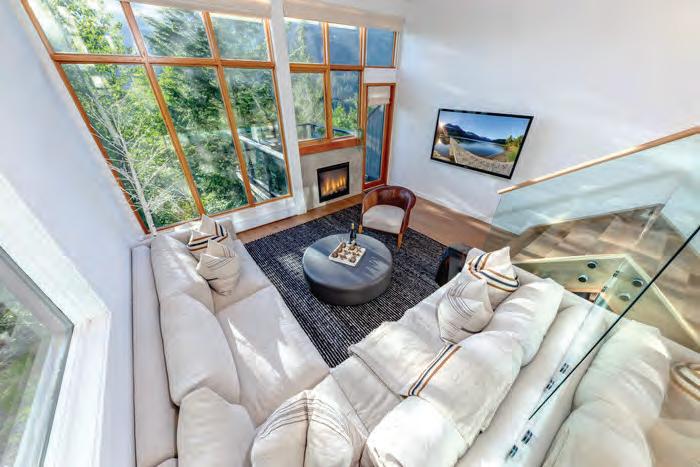









EVERY YEAR, as summer shifts to fall, one question is on the mind of nearly every man, woman and child in Whistler (not to mention thousands of recurring guests to the resort): what kind of snow year can we expect?
Meteorologists and snow bloggers consult their models and peer into their crystal balls (snowglobes?); armchair weather experts and hardcore mountain enthusiasts offer their best informed guesses based on years

BY BRADEN DUPUIS
of hard-won experience; farmers gauge the wind patterns while the elderly swear by the messages conveyed through aching joints
But even the most informed of predictions often turn out to be bogus—at the end of the day it’s the results on the ground that matter.
Case in point: many predicted La Niña conditions—caused by cooler sea-surface temperatures across the central and eastcentral equatorial Pacific—would bless Whistler with abundant snowfall in 2024-25, but those conditions never really developed.
Instead, we saw near-average snowfall when it was all said and done.
La Niña is the cooler counterpart of the warmer El Niño, both part of what’s called the El Niño-Southern Oscillation (ENSO), which “refers to the year-to-year variations in sea-surface temperatures, convective rainfall, surface air pressure, and atmospheric circulation that occur across the equatorial Pacific Ocean,” explained meteorologist Sam Collentine in an Aug. 5 blog post for opensnow.com.
In 2024, the expected La Niña conditions didn’t materialize, and Whistler and B.C. instead saw what is referred to as an ENSONeutral winter, meaning neither La Niña or El Niño conditions were present.
“For the upcoming winter of 2025-2026 [in North America], we are looking at another borderline setup similar to last year, with either a Neutral winter or a weak La Niña expected,” Collentine wrote in an Aug. 20 update, adding El Niño conditions are not expected this winter.
“Between October and January, [the National Oceanic and Atmospheric Administration] projects a 50-per-cent chance of La Niña conditions developing. Between February and April, NOAA projects a 60- to 65-per-cent chance of Neutral conditions with only about a 25-per-cent chance of La Niña.”
“Precipitation
Whistler could be in for an altogether average snowfall year.
Either way, Whistler Blackcomb (WB) is gearing up for one of its biggest seasons ever, with a boatload of special anniversaries and milestones to celebrate along the way.
Along with the big one—WB’s 60th anniversary in January—this year the resort is also celebrating Blackcomb Mountain’s 45th anniversary; the 40th anniversary of the Peak to Valley Race; the 45th anniversary of Whistler Heli-Skiing; and the 30th anniversary of the World Ski and Snowboard Festival (hope you like cake!).
The mountain operator previewed the season ahead at a community open house—its first ever—on Monday, Oct. 6.
“We thought we’d invite the community along just to learn a little bit about what
snowmaking efforts (more than 283 hectares of snowmaking coverage, powered by 1,200plus water hydrants and 350 snow guns across both mountains), as well as what’s in store for parking management in 2025-26.
Building on last year’s pilot carpool program, WB is adding additional parking reservation and carpooling options for winter 2025-26 in resort-operated lots, including Creekside Parkade and Upper Lots 6-8. Starting Nov. 7, guests will be able to book their free spots for weekends, holiday Mondays, and the core festive days of Dec. 27 to 31. The booking platform will be accessible via the Whistler Blackcomb website, with more details to follow in the coming weeks.
“I think we’re certainly taking the learnings from our own resorts in North America, and also from other resorts that
will be below normal in the north and above south, while snowfall will be below normal. The snowiest periods will be in late November and early and mid-December. April and May will be cooler than normal, with above-normal precipitation.”
- OLD FARMER’S ALMANAC
According to the venerable Old Farmer’s Almanac , the resort can expect a warmer-than-normal winter, with the coldest periods in late November, early December, and early February.
“Precipitation will be below normal in the north and above south, while snowfall will be below normal,” reads the Almanac’s long-range forecast for Whistler. “The snowiest periods will be in late November and early and midDecember. April and May will be cooler than normal, with above-normal precipitation.”
Make of that what you will, but it appears



we’ve got in store for winter and to learn a little bit more about our operation,” said WB’s COO Belinda Trembath. “There’s always lots of opinions in the community around how things could be improved, and we just thought it would be such a great opportunity for the community to be able to come in and meet some of our team members that make it happen on the ground every day.”
Attendees had a chance to learn about grooming operations (led by a team of about 90 snow cat operators, who tackle an average of 728 hectares every night) and
have rolled out reservations programs,” Trembath said. “We’re really hopeful that it will help to provide a far better arrival experience for folks.”
When asked that other big question—what kind of snow year can we expect in Whistler?— Trembath deferred to a passing patroller.
“I’m still ripping brown pow right now,” was his immediate response.
Take it from the real experts: we can whinge and worry about the weather til Dusty rides again, but at the end of the day, the mountains are what we make of them. n
Luxurious, modern, and sophisticated property steps from the Creekside gondola and shops. This 2-bedroom allows for 12 weeks of owner use or rental income if desired, including 2 weeks at X-mas this year. After a day on the ski slopes, relax in the pool and hot tubs. Enjoy the ski season more and own in Whistler at a fraction of the cost!
Heavenly Bed. Amenities include pool, two hot tubs, exercise facility and spa. Only a short walk to all that Whistler Village has to
Rare opportunity to own in the exclusive Four Seasons Private Residences. This luxurious 2 bed/3 bath 1760 sqft apartment patios. Enjoy amenities such as a ski concierge, valet shuttle, health club, outdoor pool & hot tubs. Perfect for full-time living or the ultimate Whistler getaway. Experience
Upgraded 1-bed townhome in Whistler Creekside. Prime location, 2-min walk to Creekside Gondola, shops, and restaurants. New windows provide plenty of light and southwest mountain views. Fully furnished, move-in ready. Unlimited owner use with the Phase 1 nightly rental zoning. Nearby Alpha Lake, Nita Lake. Perfect for all seasons. Call to view. No GST
A rare opportunity on Whistler’s Green Lake— one of the best waterfront lots in Whistler with stunning southwest views of Whistler Blackcomb and the surrounding mountains. This 11,316 sq ft lot offers exceptional privacy, 116 ft of lake frontage, all-day sun, and breathtaking scenery. The renovated 3-bed/2-bath home features an open living area and a new deck, perfect for enjoying the view. Located on a quiet cul-de-sac with a private dock and excellent redevelopment potential. A true lakeside gem.

Asking price-$455,000 625-4090 Whistler Way
Asking price - $349,000 112B-2020 London Lane
Asking Price - $4,395,000 21-4617 Blackcomb Way
Asking price-$800,000 2-2150 Sarajevo Drive
Asking price $5,000,000 9249 Lakeshore Drive










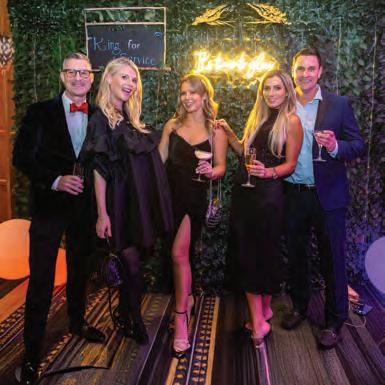




As a medical intern in Montreal back in 1984, I read the entire collection of Sherlock Holmes stories. Author Sir Arthur Conan Doyle was a physician himself and imparted much wisdom on how to approach cases, whether they be criminal or medical. One of the many lessons that have stuck with me during my career as a family doctor was Mr. Holmes’ warning to Dr. Watson “in the realms of conjecture, even the most logical mind may be at fault.”
We recently learned in Pique that Whistler council is weighing a possible spend of $476.7 million to cover additional expenses attributable to projected population growth to an equivalent of 77,000 people by 2055 (see Pique, Sept. 12: “Whistler weighs $476M in facility upgrades as growth pressures mount”). Pure conjecture, I am dumbfounded that this estimate fails to account for the dark cloud hanging over our world-class ski resort.
Each successive winter, that cloud will bear more and more rain and less and less


snow. Each summer that cloud will not produce enough precipitation to save us from wildfires. The tragic fact is our community is extremely vulnerable to the inevitable havoc global warming is already beginning to wreak. Like the vast majority of the world’s ski resorts, by mid-century Whistler will not have sufficient snow, natural or artificial, to operate as a winter destination. Our appeal to potential summer visitors could be likewise diminished by charred stumps replacing our trees and heavy smoke replacing our blue skies. We may

even be unlucky enough to suffer the same fate as Jasper and sustain a direct hit from a monster wildfire that could leave the valley in ashes.
So 77,000 people here in 2055? I too shall defy Mr. Holmes’ warning and delve into conjecture and propose a figure of 1/10th that number. Rather than being in a rush to spend half a billion dollars, maybe we should be saving our pennies for the rainy days and smoky nights that lie ahead.
Thomas DeMarco // Whistler
Recognizing fascism’s early indicators is essential to preventing it
I want to clarify Leslie Anthony’s “Hello, fascism!” (Pique, Sept. 12) article for those who may have misunderstood it. Anthony is not claiming we live under a fascist dictatorship today. Rather, he warns we are on a path toward creeping authoritarianism—a process that does not happen overnight.
He highlights warning signs such as corporate influence, suppression of dissent, and religious ties to government that slowly erode democratic institutions. Recognizing these early indicators is essential to preventing a slide into full-fledged fascism.
This is a call for vigilance, not panic.
Understanding that democracy can gradually erode into fascism helps us stay alert and proactive in protecting our freedoms.
Peter Skeels // Whistler/Pemberton
Northlands: Let’s build for good—together
Beedie Living is applying for a rezoning of 4500 Northlands Blvd. As a result of this rezoning they will deliver a significant Community Amenity Contribution (CAC) to the community. The Whistler Racket Club (WRC) has been on this site for more than 30 years. The WRC is a very well-used and loved amenity that is a significant place for indoor and outdoor recreation, is also the home for a significant amount of childcare and kids programming and






is a social outlet for many Whistler residents, visitors and second homeowners.
I think it is very reasonable that if this amenity is taken away as the result of development, the priority of the ensuing CAC should be to replace said facility maintaining continuity of programming. There are enough funds in the proposed CAC to replace this facility AND deliver employee housing, daycare and so much more. The discussion of allocation of the CAC should be a discussion about the best way to deliver a winwin-win for the Whistler community.
Imagine a weather-independent, modernized, sustainably built, multi-use racket and recreation centre that is buzzing with many different sports and activities, is alive with daycare and kids programs, supports many important Whistler Community Services Society programs and is a social anchor in the community. This facility would be frequented by a very diverse set of locals, second homeowners and visitors alike and would be a very inclusive tourism-positive centre for recreation, mental health and overall well-being. This facility would not be just a tennis club, but could be so much more with so much opportunity to do so much good.
This is the type of facility that I imagine. We can delivery this facility AND deliver employee housing solutions at the same time. I call on council to ensure CAC funds prioritize replacing the well-used and wellloved existing onsite amenity (WRC) with a
modern, multi-use facility that secures indoor recreation, childcare, and social programming for generations to come.
Let’s build for good—together.
Ben Thomas // Whistler
Thank you to everyone who came to our fundraiser for the Nature Conservancy of Canada on Saturday night, Oct. 4. We raised more than $1,000 and had a blast doing it.
Huge appreciation for the all-star team at Forecast Coffee in Function for exceptional hospitality and great food, and special thanks to DJ Lon for creating the perfect vibe. If you feel overwhelmed by climate change and social injustice, you aren’t alone. Don’t give up: “what you do makes a difference, and you have to decide what kind of difference you want to make.” -Jane Goodall.
Check out climatementalhealth.net and get your Active Hope adventure started today.
Randi Kruse // Whistler n
A letter in the Oct. 3 Pique, “Questioning people’s political priorities,” was incorrectly attributed to Hugh Smythe. The letter was in fact written by Patrick Smyth. Pique regrets the error. n













NickDavies, Whistlerlocal andexperiencedfamilylawyer practisingacrossBCandYukon. Callat 604-602-9000 or visit www.macleanlaw.ca
MacleanLawisheadquartered inVancouverwithofficesacross BritishColumbia.
$1,575,000



BY LIZ MCDONALD
AS THE BCGEU (British Columbia General Employees’ Union) strike enters its sixth week, the standoff between thousands of public service workers and the provincial government shows no signs of easing. On Monday, Oct. 6, more than 10,000 striking workers and supporters rallied on the lawn of the Legislature in Victoria, demanding the government return to the bargaining table.
Sea to Sky resident Sebastian Kallos, BCGEU’s vice president and a chainsaw specialist with the BC Wildfire Service, attended the rally and described high spirits among members on the picket lines, but also growing dissatisfaction with the NDP government’s approach.
“It was a great event. We sent a big message to the government that we’re not interested in a pay cut,” he said. “Our members have a clear resolve … we’re in it to win here.”
Kallos also expressed frustration about recent bargaining behaviour.
“We went back to the bargaining table just for one day … they were three hours late,” he said. “It’s a little bit surprising that the NDP government wouldn’t be interested in resolving a labour dispute like this.”
“When I started in 2009, predominantly, we had fires in the backcountry. You know, industry-started, or lightning, or something that really didn’t impact the communities, other than perhaps air quality… And starting about 2017 there’s been a real paradigm shift,” he said, before going on to describe the historic records of wildfires throughout Canada since 2017.
“The work environment has changed dramatically with climate change and the real
provincial government. The union and its allies—including the Professional Employees Association (PEA)—have pressed repeatedly for meaningful negotiations, but thus far officials say government proposals have fallen short.
“We’re into the sixth week of a strike with the BCGEU and the Professional Employees Association, which is another union of the civil service, who are standing shoulder-to-shoulder with us on the picket lines,” he said. “So far, government has refused to come back to negotiate at the table with a meaningful offer to settle the
“It’s a little bit surprising that the NDP government wouldn’t be interested in resolving a labour dispute like this.”
- SEBASTIAN KALLOS
problem is that there’s been no modernization in the compensation structure,” he said, describing the work as similar to emergency responders but that the pay isn’t commensurate.
The frontline public BCGEU employees in Whistler on the picket lines are BC Liquor employees.
He emphasized how frontline workers, especially wildland firefighters like him, are increasingly pushed to the brink under outdated compensation models.
Paul Finch, President of the BCGEU, painted a similar picture of exasperation with the
strike, and so obviously, we’re negotiating across the board to make that happen.”
Finch was critical of the government’s recent offers, claiming they are too low or overly narrowly targeted.
“They came [on Monday] with a 0.5-percent proposed increase … that’s not going to work for us,” he said.
The BCGEU is demanding wage increases of roughly four per cent per year— about 8.25 per cent over two years—along with cost-of-living protections to keep pay in step with inflation. The union also wants to modernize outdated pay structures,
address low-wage inequities, and improve recruitment and retention in the public service. Other priorities include fairer access to remote work, rebalancing the number of excluded management positions, and updating job classifications to reflect the complexity of frontline roles such as wildfire response and enforcement.
In a broader message to affected constituents, Finch appealed directly.
“BC civil servants take tremendous pride in their jobs. We want to be out there serving the public right now, but unfortunately, government is refusing to negotiate … with a reasonable offer at the table,” he said. “And so, despite our best efforts to minimize the impact and disruption to the public, we’re now at a phase of the strike where that’s inevitable.”
As of early October, the BCGEU reports that more than 22,000 workers at 359 worksites are fully or partially on strike, with 127 picket lines across the province. The scope includes staff at BC Liquor and Cannabis stores, liquor distribution warehouses, weigh-scale stations under the Commercial Vehicle Safety & Enforcement (CVSE) branch, and others.
In response, the provincial government has defended its position, arguing the union’s demands amount to unsustainable cost pressures and that some of the union’s figures are misleading when including “market adjustments.” In an earlier phase of the dispute, the government stated the union’s full compensation ask would amount to a 30-per-cent increase over five years when layered on top of existing wage scales. n
BY LIZ MCDONALD
FLOWER CROWNS and leafy wreaths were out in force as the Whistler Chamber of Commerce hosted its annual Excellence Awards on Friday, Oct. 3, at the Fairmont Chateau Whistler, celebrating standout local entrepreneurs, businesses and community leaders.
Themed Deep Roots, Bright Futures, the evening began with traditional singing and drumming by representatives from the Squamish Lil’wat Cultural Centre, who playfully poked fun at the crowd’s tendency to chat through ceremonies.
To help keep attention on the stage, robed “shushers”—allegedly from Scandinave Spa— took a light-hearted approach, rewarding quiet tables with gifts.
Between the clinking of forks and glasses, a representative from BlueShore Financial, a division of Beem Credit Union, thanked the community for its continued support of the awards and local business sector.
Entertainment for the night included Laugh Out LIVE! performers Rebecca Mason and Ira Pettle, who opened the evening parodying the Hairfarmers. Performing as The Beard Growers, they had the crowd singing along to “Sweet Caroline.”
“We’ve been playing at Dusty’s at 6:30 in the morning the last 20 years,” Mason joked.
Proceeds from the coat check once again supported the Whistler Community Services Society, while DJ Foxy Moron kept the dance floor moving late into the night.
The prestigious Citizen of the Year Award, presented by Race & Company LLP Lawyers, went to Ashlie Girvan of 100 Women Who Care Whistler.
“Whoa—I did not expect this,” she said, visibly moved. “I’m so happy to be a part of the Whistler community. I’m so proud to be a part of change in this community … my kids are going to be so excited.”
Girvan thanked those who have helped make 100 Women Who Care Whistler a success. The group’s model sees members each donating a small amount that, when combined, results in a $10,000 gift to a local non-profit four times a year.
Created in 1969, the Citizen of the Year award is Whistler’s longest-standing honour. It recognizes individuals who make significant volunteer contributions, encourage positive change, empower others, and foster a sense of belonging and trust within the community.
Business Person of the Year, presented by BDO, went to Nadia Demers of Ziptrek Ecotours Inc.
“To all of the other finalists in every

of the Year Ashlie Girvan poses for a photo with Karin Emond from award sponsor Race and Company Lawyers LLP.
category—you represent the true spirit of Whistler,” Demers said. “These awards celebrate not one person, not one business, but the collective impact we all have together.”
Emerging Business of the Year, presented by Whistler Tasting Tours, went to Randy Tingskou of A Little Bud.
“We’re the weed store!” Tingskou quipped, capturing a distinctly Whistler vibe before thanking his family, management team and the Chamber.
“This recognition is about overcoming judgment with curiosity,” he said. “It’s proof that no matter how or where you start, you can grow in places you once only dreamed of.”
A Little Bud also took home the Service Excellence Award (Small Business), presented by Reactive Design Inc.
Rising Star of the Year, presented by the Hotel Association of Whistler, went to Rebecca Mason of Laugh Out LIVE!. Her heartfelt thank-you speech drew warm applause from the audience.
Innovative Business of the Year, presented by Beedie Living, was awarded to Deorum Ski, which has expanded its boutique skipole business internationally within just three years of operation.
Service Excellence (Large Business), presented by Whistler Blackcomb, went to Ziptrek Ecotours Inc.
The Sustainability in Action Award, presented by Cascade Environmental Resource Group, went to GNAR Inc.
The Pat Kelly Champion of the Arts Award, presented by Arts Whistler, went to Alison Pascal of the Squamish Lil’wat Cultural Centre.
Finally, the Above & Beyond Award of Excellence went to Dominique Vallée from Creekside Health. n


















CROMPTON
BY LIZ MCDONALD
THE UNION of British Columbia Municipalities (UBCM) convention offers a chance for local leaders from across the province to gather, share priorities and advocate for their communities.
Pique caught up with Mayor Jack Crompton following this year’s conference, held in Victoria from Sept. 22 to 26, to discuss key issues facing the Resort Municipality of Whistler (RMOW)—from spruce budworm infestations to housing and transit.
While no firm commitments came from higher levels of government—there rarely are at UBCM—Crompton said there are reasons for cautious optimism, despite a theme of austerity running throughout the conference.
“A lot of discussion at UBCM was about austerity—a reality we’re facing across Canadian society,” Crompton said. “Both the provincial and federal governments have said they need to control spending. Austerity at other orders of government puts pressure on local communities, and we’ve been feeling that. Our response has been to keep advancing strategic priorities so we’re ready when grant money becomes available.”
Whistler’s mountain slopes have taken on a red hue since 2023 due to an outbreak of Western spruce budworm. These infestations occur roughly every 20 to 25 years and can last up to six years, according to provincial forest entomologist with the Ministry of Forests, Kate Mitchell, in a previous interview with Pique.
While mature trees can survive defoliation—the loss of needles—those that are young or already weakened may die. One potential management tool is Bacillus thuringiensis var. kurstaki (Btk), a biological insecticide that can reduce budworm populations.
Responsibility for mitigation rests with the provincial government, Crompton said.
“The Ministry of Forests expressed willingness to work with us and explain their approach to the public,” he said. “They’re aware of the issue but have a limited budget for spruce budworm mitigation across the province. No decisions have been made about whether Whistler will receive funding.”
Crompton said while austerity dominated many UBCM conversations, housing remains a spending


priority at both senior levels of government.
“Austerity doesn’t seem to extend to housing,” he said. “Both the federal and provincial governments are committed to investing in it. Whistler is well positioned to partner with them on worker housing.”
He added federal housing minister and former Vancouver Mayor Gregor Robertson emphasized Ottawa’s renewed role in funding housing projects—a shift Crompton said is “encouraging to see.”
The RMOW also pushed for changes that would allow social and supportive housing on community land banks in Cheakamus and



elsewhere in Whistler. These Crown lands were gifted to the municipality after the 2010 Olympics, but current regulations don’t permit those housing types.
“The minister was unaware of that limitation and expressed a desire to see that change happen,” Crompton said.
Regional transit along the Sea to Sky corridor remains a perennial UBCM topic. A recent CBC report suggested the long-awaited intercommunity bus is “tricky” because of funding and governance, according to BC Transit’s integrated service planning director, but Crompton countered that narrative.
“That article referred to a panel discussion held before our meeting with Premier David Eby and Transportation Minister Mike Farnworth,” he said. “Our meeting was really positive. We made the case for regional transit funded by motor fuel tax—it was the most optimistic conversation we’ve had yet.”
While no agreements were reached, Crompton said he left feeling hopeful.
“Securing regional transit in 2025 is obviously not going to happen, but 2026 feels like a possibility.” n

CALL JAMES,THELEGENDS& EVOLUTIONSPECIALIST Direct: 604-902-0132 TollFree: 1-888-689-0070 james@whistlerrealestate.net www.whistlerrealestate.net


•AirbnbPermitted -flexibleuseasgetawayor investmentproperty
•PrimeCreekside Location -steps to the CreeksideGondola,ski-in/ski-out access
• FullyRenovated(2020) - modern kitchen& bath, warm in-floor heating,stylishfinishes
• Sold Fully Furnished -turnkey and move-in/ rental ready
•Year-RoundAmenities - heatedoutdoorpool & hottub
•OutdoorLifestyle - walk to Nita&Alpha Lakes forsummer paddle/swimorwinterskating







BY LIZ MCDONALD
WHISTLER COUNCIL has approved a change to its employee housing policy intended to make new projects more financially feasible.
At its Oct. 7 meeting, council endorsed amendments to Policy K-01: Employee Rental Housing, creating a Fixed Rental Rate (FRR) category to be used in limited cases where projects require additional flexibility to secure financing. The existing rent-geared-to-income (RGI) model will remain the default for most Whistler Housing Authority (WHA) rentals.
“We are proposing to establish a fixed rental rate in addition to the existing RGI rate,” said John Chapman, manager of projects planning. “The idea is that this fixed rental rate would apply in specific instances where we find it necessary to finance new, affordable employee rental projects.”
The new rate is based on a provincial middle-income limit (MIL) published by BC Housing, representing the 75th income percentile for families with children in B.C. BC Housing notes the gross household income that does not exceed this bracket is $201,030. Under the amendment, FRR rents may be set at 30 per cent of that limit when required to make a project viable. Each use must be approved by council through a housing
agreement bylaw.
“It reduces the required equity to finance the construction, making that project viable while ensuring compliance with any grant programs,” Chapman said.
Council Policy K-01 was first adopted in 2019 to provide a standardized framework for employee rental housing managed by the WHA. It sets eligibility definitions for qualified Whistler employees and retirees, establishes household income limits, and outlines how rents are calculated and administered.
Councillors generally supported the change, describing it as a pragmatic tool to help new employee housing projects proceed amid rising construction costs.
“Financial factors are always changing in building housing, so the more financial enablers we have, the better,” said Councillor Arthur De Jong. “This is a good tool.”
Council also gave first, second and third readings to a housing agreement bylaw for a project at 1600 Mount Fee Road, which applies the new FRR model to 20 townhomes of 125 employee-restricted units in Cheakamus Crossing Phase 2, Lot 3. The remaining 105 apartments will continue under the RGI model.
The project, developed by the Whistler


Development Corporation and to be owned and operated by the WHA, includes a five-storey apartment building and 20 threebedroom townhomes. Construction has begun, with excavation and foundation work underway.
“It reduces the required equity to finance the construction...”
- JOHN CHAPMAN
Under the housing agreement, apartment rents are capped at $2,069 for studios, $2,510 for one-bedrooms, and $3,502 for twobedrooms.
These amounts reflect a three-per-cent increase permitted under the Residential Tenancy Act (RTA) for 2025. Actual rents will continue to be set by income under K-01.
For the 20 townhomes, the fixed rental rate will be $5,025.75 per month—equivalent to 30 per cent of the provincial middle-income limit—with rent adjustments tied to RTA rules during tenancy and MIL changes at turnover. Utilities are included except for electricity,




and parking will cost up to $100 per month. Eligibility and occupancy requirements mirror K-01, limiting the homes to full-time Whistler employees or qualified retirees on the WHA waitlist.
Coun. Ralph Forsyth said the discussion raised questions about other policies that affect the local rental supply, including homeowners with suites who may not rent them out because capped rates make it financially unattractive.
“I’ve had conversations with people who own suites in their homes, who had mandatory suites in their homes that aren’t rented because it just isn’t worth their while to rent it. So I think if we could tweak that, then that would add inventory to the supply,” he said.
Forsyth acknowledged the municipality’s suite buyout program, which allows some owners to remove rental covenants by paying a fee, but said not everyone can afford that option. He suggested exploring a review of rent levels to encourage participation while maintaining affordability standards.
Council voted unanimously to endorse the policy amendment and advance the Cheakamus Crossing housing bylaw, which will return for final adoption at a future meeting. n
















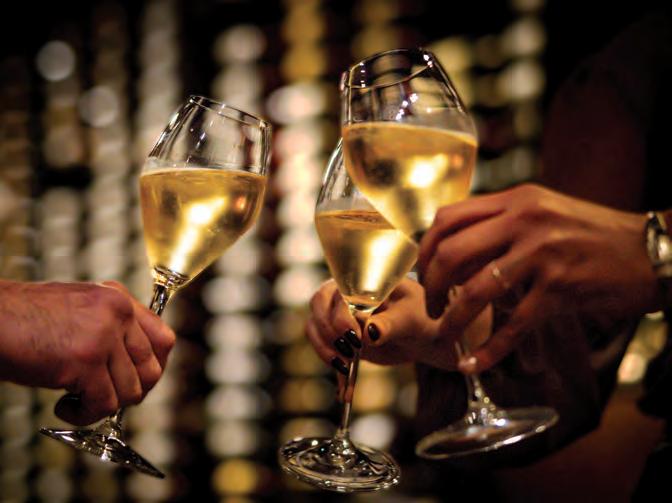




‘WE HAD THE SUPER SCARY TASK OF THEN HAVING TO HIKE THEM BACK UP THIS SLIPPERY, MUDDY, VERTICAL JUNGLE PATH WITH A BAG OF THE ONLY TADPOLES EVER FOUND’
BY LIZ MCDONALD
A PAIR OF WHISTLER residents have helped document a scientific breakthrough deep in Ecuador’s Mindo cloud forest—proof that one of the world’s rarest amphibians is breeding again after being thought extinct for three decades.
Earlier this year, naturalist Macaila Wagner and photographer Jay Baumann travelled to Ecuador’s Arlequín Reserve at the invitation of the Khamai Foundation, a non-profit leading a rapid-response effort to save the Mindo harlequin toad (Atelopus mindoensis ). The critically endangered species was rediscovered in 2019 after being presumed extinct since 1989, and Khamai’s project aims to protect the last known population by securing its habitat, monitoring breeding activity, and establishing a backup colony in captivity.
“The goal is to save the only known population of the Mindo harlequin toad and prevent it from disappearing again,” Wagner said. “We were incredibly lucky to be there at a pivotal moment.”
The foundation’s team is raising USD$296,000 to buy and expand the 28-hectare Arlequín Reserve, protecting the only known breeding site from deforestation and development. As of early October, the campaign had reached about 65 per cent of its goal.
When Wagner and Baumann arrived in August, they joined Khamai biologists on night surveys through the steep, mist-shrouded cloud forest. “We hiked straight down to the river in the dark, just headlamps cutting through the fog,” Wagner recalled. “An hour in, we spotted the tenth surviving toad—only the second female seen since 1989.”
Days later, the couple helped locate four tadpoles, the first ever recorded in the species’ history. “It was surreal,” said Baumann. “We were the first people to ever photograph this stage of its life cycle.”
Finding the tadpoles was no easy feat, either, thanks to an evolutionary trait.
“Mindo toad tadpoles have a special evolution where they’ve got a sucker on their stomach that allows them to hold on to small pebbles in the riverbed. They’re able to stay in such fast-moving rivers,” said Baumann. “So, the goal was basically to walk inch by inch up and then basically try and find any of these tiny little tadpoles that were just buried underneath these pebbles.”
For hours, they searched to no avail doing “painstaking” work. Just before a lunch break, they made the discovery.
“We had the super scary task of then

having to hike them back up this slippery, muddy, vertical jungle path with a bag of the only tadpoles ever found,” Baumann said.
Those tadpoles have since been transferred to Centro Jambatu, Ecuador’s national amphibian conservation centre, to form an ex-situ safeguard colony.
“Finding proof of tadpoles means there’s genuine hope,” said Wagner. “A single female can lay hundreds of eggs, so each discovery could represent a huge step toward recovery.”
Despite the optimism, the toad’s survival remains precarious. The reserve is surrounded by logged and privately held forest, with one large tract currently listed for sale upstream. Khamai is working to purchase and reforest the land which faces pressure from a cattle pasture encroaching on it.
“This is our one shot to save the toad’s only home from deforestation,” Khamai stated in a September update.
And while these tadpoles hypothetically can be bred in captivity, the previous attempts in 2019 failed, making conservation of land the best bet to ensure the tiny toads’ survival.
Wagner, who holds a Bachelor of Science in zoology, said her focus now is using storytelling and social media to make conservation science accessible. “My goal is to connect people to these projects in a way anyone can understand,” she said. “You don’t need a biology degree to care about biodiversity.”
Baumann added sharing positive conservation news is just as vital. “There’s a lot of doom and gloom about the environment,” he said. “It’s encouraging to remind people that dedicated work can make a difference— that we’re not out of hope.”
The couple, both longtime Whistler residents, say they plan to continue supporting the Khamai Foundation’s campaign and raising awareness about international and local conservation efforts.
Wagner’s videos and Baumann’s photos of the discovery can be found on Instagram at @ Makilllla and @jaybaumann.photos. n






BY CHLOE VAN LOON
THE AIR HUNG COOL and damp beneath the mighty conifers of the Callaghan Valley— my perfect home. I may look like a simple, somewhat drab white mushroom, but I have my secrets.
While noting that my gills have now released the vast bulk of my spores, the hummm of human commotion began. The annual Fungus Among Us Festival must have ensued, and this was the coveted “Walk with Gurus”—a parade of the fungi-curious began encroaching into my quiet realm.
A shadow falls over me. Then, a gasp—the kind of thrilled, slightly manic sound only a mycophile makes. Towering above me was a distinguished woman, her eyes magnified by glass and sparkling with joy. Perched jauntily on her head was a baseball cap embroidered with a rainbow-coloured mushroom—a sign of her devotion and honour in this community.
Gently, a practiced hand started fondling my base, and I was plucked from the forest floor. Plop! A loved wicker basket became my understory. For some time, I endured the rhythmic sloshing of the “Walk,” listening to the guru’s endless chatter about other fungal cousins and our ecological roles.

Before too long, I was carefully placed on a pristine sheet of white paper, and another Guru leaned in, scrutinizing my form with a hand lens. This was the moment of identification— the true purpose of my journey.
“See here,” they murmured, “even though it’s a lighter colour, you can still see the telltale signs of a Cortinarius.” Firstly, the remnants of my fibrous cobweb-y veil, known as a Cortina, barely remained, which, in my youth, connected my cap margin to the stalk.



I also still have faint sprinkles of my brown spores along my stalk. Lastly, unlike some delicate fungi, I have a substantial, fleshy cap and stalk.
People! Novices to fungal fanatics started to block the fluorescent light, shuffling, shuffling, shuffling. Some pointed and whispered about my more glamorous neighbours: the bright red Amanitas or the prized Chanterelles. But I got my share of attention.
Many people offered insightful



observations and expressed their wonderings and curiosities. But too often for my liking, the same question was delivered with a hopeful, hungry glint in the eye: “Is it edible?”
No! I silently screamed. I am not edible. In fact, many of my Cortinarius cousins can cause serious stomach distress and potentially even more serious problems. I wished they could simply admire the subtle elegance of my structure, my perfect biological form, the way my species contributes to the breakdown of organic matter that makes these forests thrive. I am beautiful, complex, and vital— isn’t that enough? I may be “boring” to some, but to the right mind, I am a puzzle, a mystery, and a beautiful puzzle piece to understanding the deep secrets of the Sea to Sky ecosystem and beyond.
To find out what happens next to this Cortinarius you’ll need to attend the Mushroom Display at Legends Hotel in Creekside on Oct. 18 from 2:30 to 4 p.m. during the Fungus Among Us Festival. Drop by to see more than 150 species of mushrooms displayed on the tables. Gurus will be on hand to answer all your curiosities.
Naturespeak is prepared by the Whistler Naturalists. To learn more about Whistler’s natural world, go to whistlernaturalists.ca. n

























25, 1920 – NOV. 29, 2004
The Resort Municipality of Whistler from time to time recognizes certain persons in the community who have contributed of themselves to help make Whistler a better place for all to enjoy.
The community recognizes these outstanding contributions by declaring them:“Freeman of the Resort Municipality of Whistler.”
BY G.D. MAXWELL
AS WE ALL KNOW by now, Whistler was envisioned and created to become a ski resort worthy of hosting a Winter Olympics. But the first mayor of the first Resort Municipality—Whistler—wasn’t a skier. No one remembers Pat Carleton ever strapping on a pair of skis. And while that may seem ironic, it turned out to be a blessing.
He was, as John Hetherington, who served as alderman in those early years said, willing to leave the development of skiing to the people running the mountain. Pat was focused on building a community. And the early foundations he and those first councils put in place set the stage for the success Whistler has become.
It could all have turned out so differently.
Pat was a coffee salesman, a trombone player, a fisherman, a big, affable Irishman and an indefatigable force to be reckoned with. He first visited Alta Lake in 1956 to fish in the local lakes. I don’t know if he was successful hooking fish, but Pat was hooked on the beauty and serenity of the valley. Four years later, he and his family owned a cabin on Alpha Lake, where he spent many weekends and summers.
He mostly retired in 1971, though he’d still run a coffee concession at the PNE for a number of years. He and his wife moved full-time to their cabin on the lake. Being an outgoing salesman, Pat immersed himself in the local community, joining the Alta Lake Ratepayers Association and becoming president of the Chamber of Commerce. He was also a strong advocate for local government at a time when the town was simply a part of the regional district.
When the Resort Municipality of Whistler (RMOW) was formed 50 years ago, he decided to run for mayor. Paul Burrows, publisher of the Whistler Question, ran against him. There were 288 votes cast for mayor in that first election and Pat received 82 more than his opponent. Alta Lake officially became Whistler and it was time to get to work.
But at that time, there was no “there,” there. Early meetings of the new council were held in Pat’s garage, later at Mount Whistler Lodge. Those early meetings were about listening to each other, learning and building a consensus about what needed to get done to create a town.

Pat and Kay Carleton enjoy a toast to celebrate their 40th wedding anniversary.
In relatively short order, key decisions were made, including the well-documented decision about where to site the new village centre, the creation of Whistler Village Land Company (Land Co.) to facilitate its early construction, acquisition of Meadow Park and Alpha Lake Park lands, the Valley Trail, the master development plan and zoning needed to make it happen, and the sewage treatment system.
As recalled by Geoff Pearce, the town’s first treasurer and clerk, and John Hetherington, these landmark decisions were facilitated, but not directed, by the mayor. Both Pearce and Hetherington described him as a quiet leader, one who listened and helped develop consensus around the council table.
Al Raine, who was appointed by the province to serve on that first council, recalled, “Those early days were important days. We could have gone in many, many different directions but that first council shared the same general vision, it was just a question of how to get there.”
One of the key factors contributing to the successful creation of the nascent resort was the selflessness of the decision makers. The mayor and every alderman was there, first and foremost, to build a successful community. Nothing was personal. No one was there to line their own pockets. If it didn’t serve to move the town forward, it wasn’t done.
Pat served as mayor from 1975 to 1982 and ran unopposed in the elections of 1978 and 1980. He turned the first sod
on the new town centre in August 1978. He was there to help open Blackcomb Mountain in 1980. He facilitated upgrading the phone system, the weather office, the post office, the train station and, perhaps most important, he spent a lot of time in Victoria keeping key ministers in the provincial government informed and interested in what was happening in Whistler.
What was happening was about to get very, very difficult.
The Land Co. was incorporated in 1978. It was a non-profit arm of the RMOW to oversee development of the Village. In the spring of 1980, the Village was a major construction site. The Land Co. had sold development rights to private developers for Phase 1 projects.
And the Land Co. had begun work on the $5.8-million Resort Centre, a multipurpose public building intended to house an Olympic-size ice rink, pool, restaurant and other facilities. It’s better known today as the Conference Centre.
In 1981, a confluence of events—tax law changes, a recession and interest rates set to soar above 20 per cent—saw a number of developments abandoned in mid-construction. Sales to private developers and the resulting cash flow for the Land Co. dried up. The budget for the Resort Centre increased dramatically. What happened next was Mayor Carleton’s come-to-Jesus moment.
Geoff Pearce tells the story. “Pat and I had regular Monday morning coffee
meetings. I came in one Monday and Pat was white as sheet, he was a ghost. I said, ‘What’s up Pat?’ He said, ‘I had to make a decision yesterday, over the weekend.’”
The concrete perimeter walls of the Resort Centre were up. But the massive roof was a separate contract.
The decision Pat made was to sign that contract, knowing the Land Co. couldn’t make all the payments with the funds available, but hoping things would work out. He believed it was in the community’s interest, knowing it could well cause the financial collapse of the Land Co.
It was a bold move for a man who preferred consensus decision making. And it all could have ended so differently if the province hadn’t subsequently stepped up and “bailed” Whistler out in exchange for development rights in Village North, a deal that’s been described as the best investment the province ever made.
As with so many things in those early years, the leadership of Mayor Carleton and the disciplined planning of that first council set the foundation for what is now Whistler. The tireless work of the council and Pat’s deft hand dealing with the province set the stage for success.
This is Part 6 in a 16-part series recognizing Whistler’s Freedom of the Municipality holders, in honour of the Resort Municipality of Whistler’s 50th anniversary. Watch for the others in the weeks ahead, and find them all at piquenewsmagazine.com. n












































































































































































































































LOCALS ARE SPEAKING OUT ABOUT THE RISKS OF SLOPE STABILITY, WATER SAFETY AND LACK OF CONSULTATION AROUND A PROPOSAL TO LOG BURNED TREES FROM THE 2023 DOWNTON LAKE WILDFIRE
BY LUKE FAULKS
Local Journalism Initiative Reporter
WHEN JESSICA Shoubridge and her family moved to Gun Lake, she imagined a future rooted in the area’s natural beauty. She envisioned her commercially zoned property one day hosting an eco-tourism venture built around the lake and featuring a west-facing view of the hillside.
Then, the 2023 Downton Lake Wildfire ripped through the Bridge River Valley, burning up nearly 10,000 hectares, destroying 43 properties and exposing Shoubridge to a network of logging access roads previously under tree cover.
Now, two years after the fire, Shoubridge says she has watched the forest recover naturally.
“The natural regeneration that’s happened in the last two years has been remarkable,” she said. “We’re like, ‘It’s going to be OK, it’s starting to look good now. Things are starting to grow back.’”
Resident Sarah Frood describes a similar scene.
“Across the lake, where it burned, you can see green,” Frood said. “We’ve been biking out on the trails that burned. You can see natural regrowth happening. It’s coming back to what it was.”
Partly in light of that regrowth, Shoubridge, Frood and other residents are raising the alarm over a proposal to log firedamaged timber above the lake. The practice,
water drawn from the lake at risk. They’re asking for the province to put the proposed salvage logging operation on pause until more research can be done.
Salvage logging usually involves logging in a burned area.
It’s an attractive option for forestry outfits,
“The natural regeneration that’s happened in the last two years has been remarkable.”
- JESSICA SHOUBRIDGE
known as “salvage logging,” is becoming increasingly common in B.C. as forestry outfits look for ways to capitalize on areas damaged by forest fires.
Locals are concerned the practice will undermine the area’s recovery, risk eroding the slope above residents’ properties as the community tries to rebuild and put drinking
producing “waste” wood for pulp and paper at a time when the B.C. forestry industry is struggling to cope with increasingly damaging wildfires and pine and spruce beetle infestations. In 2024, the B.C. government announced plans to expedite salvage logging permitting in an effort to boost the province’s forestry sector.
Still, the practice is controversial.
Proponents argue salvage logging reduces fire hazard by removing potential fuel for future forest fires, captures timber value before it decays, creates jobs and accelerates reforestation by removing dead trees and planting saplings for future forest stands.
But in a letter shared with Pique, Robin Naidoo—Gun Lake resident and lead scientist with the World Wildlife Fund—argued a more holistic assessment of the benefits of salvage logging in Gun Lake is necessary before the project can proceed.
“Wildlife, biodiversity and other nontimber values within the Downton Lake fire area could be severely compromised unless post-fire salvage logging is scaled back,” Naidoo wrote to the Cascades Natural Resource District, which approves timber harvesting in the area.
“[The] dead wood, nutrients and complex burned vegetation structure that will be ‘salvaged’ in fact support a whole host of unique biodiversity that has adapted to post-wildfire disturbance,” he continued. “Retaining a significant portion of this burned vegetation complexity is critical to whether forests regenerate [well] or become monoculture ‘ghost stands’ that are devoid of biodiversity, like so many of Canada’s logged-

SALVAGE GARDEN Interwest Timber Ltd. is seeking a net cut block size of 81.8 hectares across three cut blocks, excluding wildlife tree patches that will be left behind by the operation.
MAP BY CHARTWELL FOR INTERWEST TIMBER LTD.

over, secondary forests.”
Studies show salvage logging can also increase sedimentation and destabilize slopes, spurring concerns from residents around efforts to rebuild homes below the proposed salvage logging on the steep, west side of the slope and worries that increased landslide risk could compromise their water source. The lake is the main drinking water source for the 260 properties in the area, according to the Gun Lake Ratepayer’s Association.
“If there’s a big storm [and] we’re at greater risk of landslides and sediment getting into the water, who is going to be there to clean that up if the worst-case scenario happens?” Frood asked.
A hydrological assessment, which studies the potential for disasters spurred by the movement of water—including floods, droughts, and landslides—was produced in 2024 for St’át’imc Tribal Holdings Biomass Ltd. (STH).
The report found “salvage in high-severity areas [like Gun Lake] is not expected to worsen hydrologic hazard if best practices are used,” including re-planting once harvesting is done.
“The exception would be where retention could aid in the deposition of post-fire hydrogeomorphic events such as debris flows and debris floods,” the report added, echoing concerns from residents about debris making its way down to the newly rebuilt homes and the lake itself.
The current project proposal, led by Interwest Timber Ltd. on behalf of STH, would involve cutting salvage blocks on the steep, firescorched slopes above Gun Lake.
Interwest has already reduced the size of its proposed cut blocks since the project was first identified in early 2024—removing areas that overlapped with hazard zones identified in a provincial post-fire risk assessment. At the behest of Xwist’en First Nation, an STH co-owner, the current proposal also leaves behind more high-quality, still-living trees, rather than harvesting them along with the burned stock.
The net block size, excluding the wildlife tree patches to be left behind by the logging
operation, stands at 81.8 hectares across three cut blocks—77.4 hectares on the west side of the lake, and two smaller cut blocks (1.3 and 3.5 hectares) on the east side, according to a visual impact assessment summary form conducted in August.
Still, despite that reduced mandate, residents of Gun Lake are calling for a full stop before the operation is approved by the province—sounding off on social media, signing a petition and firing off letters to officials.
And while they’re raising concerns over the environmental factors above, they’re hoping last year’s hydrological report represents the most compelling case to reject the proposed salvage logging operation.
“There is a preference on the part of [STH] for salvage to occur as soon as possible before the burned stands lose value from an economic perspective,” the report reads, in part. “Based on extensive fire-related damage to the roots and boles of the affected timber, mainly Douglas-fir, stands are expected to be become un-economic within 12 to 24 months.”
But it’s now been more than two years since the fire.
“We’re past that window,” Frood told Pique. “I feel like we need an updated assessment before they proceed … Is the economic benefit really worth the risk to 200plus homes that are getting their drinking water from the lake? We don’t know, because it’s not up-to-date anymore.”
Both Shoubridge and Frood stress they are not opposed to logging in principle; they’re looking for a more up-to-date assessment.
“I just want them to use the best evidence, and right now, it feels like it’s being driven by the economics and not the bigger picture for what’s best for this community,” said Frood.
The decision on whether to approve Interwest’s salvage logging proposal now rests with the province. In the meantime, residents continue to press for a halt, an independent hydrological study, and a more transparent consultation process. So far, 198 people have signed the petition to stop salvage logging.
Interwest and the B.C. Ministry of Forests did not respond to requests for comment before Pique’s publication deadline. n



1087MadeleyPlace
$2,950,000
* Wellmaintainedhouseon quietcornerlot
*4bedrooms/2.5bathrooms, approx2,466sq.ft.
*Closetoallyear-round WhistlerResortactivities
6361FairwayDrive
$4,980,000
*ExecutiveLogHouse,locatedin popularWhistlerCayHeights *4bedrooms/3.5bathrooms, approx.3,200sq.ft.
*Fantasticinteriordesign& Mountainviewbalconies
Co-Listedwith: Bill Wong,RealtorSutton-Centre Realty
1209MountFeeRoad
$2,550,000
*Executive“likenew”DuplexHome inpopularCheakamusCrossing *3bedrooms/2.5bathrooms *Approx.2,369sq.ft.
*Fantasticinteriordesign *2largebalconies&gardenpatio *2cargarage&leguestparking
#24-4385NorthlandsBoulevard
$898,000
*WhistlerVillage-Symphony Townhouse
*Updatedspaciousstudiodesign
*Bedalcovearea/1bathroom *Phase1-NightlyRentalZoning *LargeKitchendesign/Approx480sq.ft. *Quietcourtyard,undergroundparking
*Let’sconnect= realestatetrends changedaily!
*Shareideashowtode-clutter/ renovateorbuild
*Review:upsize/downsize/ buy rentalproperty
*WillyousellorbuyinAutumn/ Winterseason?
*Visit: WhistlerHomes.com forfurtherdetails

KathyWhite
Realtor® Advisor
PersonalRealEstateCorporation
Engeland VölkersWhistler
604-616-6933
kathy.white@evrealestate.com

&

BY LUKE FAULKS
Local Journalism Initiative Reporter
HANNAH JONES comes from a long line of iron women.
The Lil’wat youth is the force behind the Nation’s first-ever competitive powwow, running Oct. 10 to 12 at the Úll’us Community Centre (82 IR10 Road) in Mount Currie. She’s taken the reins from her late mother, Cina Gabriel, who organized the gathering for more than a decade.
Saturday evening will feature the inaugural Ironwoman’s Memorial Special, a new event Jones created in memory of her mother and grandmother.
“It’s when jingle and fancy dancers all dance at the same time, and whoever dances the longest is the winner,” Jones explained. “It means a great deal to me, because it’s in honour of my late mom and my late grandma. I wanted to portray how strong they were when they were alive. They were iron women. They were strong in all aspects of their life. I just wanted to show that.”
This year’s instalment of the Indigenous Strong Powwow will feature the renowned Thunder Hill Singers from Oklahoma as the host drum and introduce competitive categories for dancers of all ages.

Participants will be judged on “footwork, if they’re on beat, [and] their regalia,” Jones said. Dancers will compete across traditional, grass, fancy and chicken dance categories, with prizes in age groups ranging from juniors to golden agers.
Jones credited Qaqawam Christopher Wells and the Lil’wat Business Group for this year’s competitive element. It was a first-time donation from the band that inspired Jones to re-think the powwow.
She said her mother would have been thrilled
to see the powwow grow to its current scale.
“She would be so excited,” she said. “For the longest time, she’s asked the band to support the powwows, and she would be so ecstatic to know that they’re supporting us here. And she’s always wanted the powwow to grow, but since all of it was usually out of our money, we couldn’t make it as big. So yeah, she’d be really happy.”
Jones told Pique she’s expecting plenty of participants, adding she received “messages from drum groups from as far out as Alberta.”
The event is open to all, with grand entries scheduled for Friday at 7 p.m., Saturday at 1 and 7 p.m., and Sunday at 1 p.m.
For those attending a powwow for the first time, Jones offered a few words of advice:
“If you want a photo of a specific dancer, you should ask first. And if you want to touch the regalia or just hold it, you do have to ask the dancer before you touch anything. Everyone’s free to dance in intertribals, and just be respectful of everyone around you.”
An intertribal, she explained, “is where everyone can dance at the same time. It’s not for specific categories, but all categories— dancers and guests—stand together.”
Though she’s proud to carry on her mother’s legacy, Jones said the process hasn’t been without challenges.
“I haven’t said this out loud, but it’s been a real challenge hosting the powwow without my mom, because she was the original host, and I was kind of her co-host,” she said. “And yeah, I could just really feel her energy there.”
After nearly a year of preparation, Jones said she’s eager to see it all come together.
“It’s been a lot of fun, but it’s also been challenging,” she said. “We look forward to seeing everyone. I can’t wait for people to enjoy this event that we’ve put on for the community and just have fun.” n





























17, DOZENS
BY LUKE FAULKS
Local Journalism Initiative Reporter
IN NOVEMBER 2024, a pair of young grizzlies travelling through the Pemberton area were shot. The event left residents and conservationists upset and confused about the circumstances that led to the bears being killed.
The bears were being tracked by locals and the team at the Coast to Cascades’ (C2C) Grizzly Bear Initiative. In the wake of the tragedy, C2C said they noticed a change in public attitudes towards the bears.
“There was anger, there was still fear. But also there was a sympathy [and an] understanding,” recalled C2C’s Jolene Patrick. “We saw people who started to think about the idea of coexistence, or the idea of grizzly bears on the landscape in a human-dominated area a little bit differently.
“So we wanted to find a way to, not necessarily push respect for grizzly bears onto people, but to show that grizzly bears are amazing and important to the culture, and art has a way of bringing all of that together.”
That spark led to a February proposal to the Pemberton Arts Council.
Months later, the result is an exhibition featuring more than 40 artists and 70 works across multiple mediums—each piece offering a unique interpretation of the grizzly bear’s role in the local ecosystem.
The show opens on Friday, Oct. 17, at the Pemberton & District Community Centre, featuring a kids’ show from 4 to 6 p.m. and the main exhibit from 6 to 8 p.m. The evening will feature local art, educational booths and live music from DJ Rich-A. Admission is free.
“We wanted to spark awareness, emotion, and inspiration.”
- JOLENE PATRICK
The Oct. 17 event will be C2C’s first foray into art shows. Erica Van Loon, C2C’s communications coordinator, said art allows people to connect to grizzly bears in ways facts and figures sometimes can’t.
“Art is such a powerful medium, especially in a case like this, because it’s up to the
individual artist and how they communicate whatever it is they feel or think about the species,” she said. “It also just allows for the public to come in and view the artist’s interpretation, and really provide a larger understanding that they may not have had before.”
Patrick echoed that sentiment.
“We wanted to spark awareness, emotion, and inspiration,” she said. “We asked artists, ‘What does the grizzly bear mean to you? How can we promote understanding?’ The submissions we received are incredible; each one tells a story.”
Many of the pieces will be for sale, with proceeds divided between the artists, C2C and the Pemberton Arts Council—directly supporting future coexistence and education programs.
The showcase will feature public voting to determine which artists take home cash prizes, a craft table and outreach booths hosted by conservation partners including WildSafe BC, Stewardship Pemberton Society, C-Paws, Sea to Sky Invasive Species Council and Spel’kúmtn Community Forest.
For Van Loon and Patrick, the art show is about more than admiration; it’s about responsibility. Both emphasized the importance of learning to
live alongside grizzlies in a landscape where human development continues to expand.
“Grizzly bears are meant to be on this landscape. It’s amazing habitat for them,” Van Loon said. “They’ve been here forever, so it’s not a shock that they’re here. We have a responsibility to make the right choices so we keep both bears and people safe.”
Those choices include managing attractants, keeping dogs leashed and making noise on trails. The conservation group also offers a variety of education resources on how to safely interact with bears on its website.
“We’re surrounded by mountains and beauty, and that also means that there’s wildlife that lives in this beauty as well,” said Patrick. “It’s all part of this ecosystem, and we as humans have a responsibility.”
The C2C team continues to focus on helping grizzly populations—particularly the critically endangered Stein-Nahatlatch population—recover and reconnect with healthier neighbouring groups through coexistence initiatives, electric-fencing programs and DNA studies tracking genetic movement across the region.
For more information on the upcoming art show, visit coasttocascades.org/ events or pembertonartscouncil.com.
For more information on the upcoming art show, visit coasttocascades.org/ events or pembertonartscouncil.com. n

BuyCanadianshouldfundCanadian anadianshouldfundCanadian jobsandnews,notU.S.BigTech
TotheGovernmentofCanada, Canada’ssovereigntyandeconomyisunder threatfromabroad.Morethanever,Canadiansmustbefreeto decideourowncountry’sfuture.
Astrong,pluralandfreenewsmediaisanessentialingredienttoourdemocracy: ahealthyindustrythat servesandisbeholdentoCanadians,notforeigntechgiants.
OurCanadianpublicationshavealwaysstoodfora strongandindependentCanada.
WeapplaudtheGovernmentofCanada’sambitiontobuildCanadastrong,andcommitmentintheforth comingBudgettoBuyCanadian.
Lastyear,ourfederalgovernmentincluding agenciesandCrowncorporationsspentover$100millionon advertising.MostofitwenttoU.S.BigTech.1
WhyarewefundingAmericantechmonopoliesthatextracttensofbillions ayearoutofCanada--largely untaxed--attheexpenseoflocaljournalismandculture,andwhoseplatformshavebecomevectorsfor divisionanddisinformation?
Unlikethem,weareaccountabletoCanadiansandlegallyliableforwhatwepublish.Ourprofessional journalistschasethetruth,notalgorithms.Weproducereliable,trustworthyinformation,notclickbaitand AIslop.
Let’sreinvestouraddollarsinCanada.InBudget2025,theGovernmentofCanadashouldfollow Ontario’sleadandsetasidea minimumof25%ofitsadvertisingbudgetsforCanadiannewsmedia.
Atnoadditionalcosttotaxpayers,thegovernmentcansupportlocaljobswhilegettingitsmessageoutina brandsafeenvironment.FarfewerCanadianstrustadsonFacebookandInstagramthanthosepublishedby Canadiannewsmedia.2
BuyingCanadianadvertisinginCanadiannewsmediaisboththerightandsmartthingtodo.
Respectfully, Canada’snewspublishers












ONE OF THE BEST parts of moving to Squamish this spring was rediscovering its mountain bike trail system. I’d already ridden many of the classics, the mainstays and even some of the recently-commissioned builds. But to properly get a feel for a trail network, you need to live it. This summer I’ve been riding trails two to three times a week that are a quick

10-minute pavement commute from my house, the area officially called “Alice Lake, Ridge and Highlands.” This is the zone you access from either Alice Lake Campground, Dowad Drive (Jack’s Trail) or up in Garibaldi Highlands via Perth Drive (Mashiter). It’s arguably the most versatile mountain biking area in Squamish with everything from chill greens and funand-fast blues to world-class granite slabs that can scare the bejeezus out of any advanced/ expert rider.
A bit further up the hill is the massive Diamond Head area, commonly referred to as “university” given the proximity of the Capilano University-Squamish Campus. This is arguably the most popular trail network in town, with nary a free parking space in sight on a sunny Saturday. The riding is world-class with the ability to shuttle many of the trails by driving up Garibaldi Park Road. For reference,
this is the same road vehicles use to access the Elfin Lakes and where many ski-touring novices discover the requirement of snow chains in the winter.
South of the downtown core and tucked away in the shadow of the Stawamus Chief are the Valleycliffe and Crumpit Woods trails. This zone is notorious for its complex-to-navigate loops and braided trails. The Trailforks app is seldom helpful, since many connecting trails are unsanctioned and don’t appear on the map. Many Squamish bikers generally leave the area alone completely, unless they live in Valleycliffe themselves. But if you have a local showing you around, there’s no shortage of steep and technical gnar on hand.
Do I think this encompassing Squamish network outdoes my former home trail network in beautiful Whistler, British Columbia? Let’s break it down into a few categories.
Note: To keep the playing field level, I have removed the Whistler Mountain Bike Park from this comparative analysis.
Whistler’s terrain is simply legendary. The steep and technical Westside trails, the uberlong descents on Blackcomb, the circuitous Cheakamus zone and the early-season-friendly Wedge trails. And let’s not forget about Lost Lake, which despite its reputation as being for novices, has climbing features that will challenge any level of rider.
For advanced riding, Whistler is characterized by steep ups and steeper downs. There are few places I’ve ridden where you cascade down the mountain from steep feature to steep feature for up to 800 vertical metres.
While the terrain is not contoured as steep in Squamish, it is certainly not lacking in expert terrain. People travel from all over the
world to ride the legendary and exhilarating granite slabs, which are surprisingly grippy, even in the wet.
Both networks have alpine riding, but Lord of the Squirrels is more accessible and in a non-motorized zone. So I have to give the terrain edge to Whistler.
Point: Whistler
The flow trail that shot Squamish to mountain bike stardom is Ted Tempany’s machinebuilt masterpiece Half Nelson, which was commissioned in 2010. It would go on to attract riders from all over Canada (and the world) and fuelled development of additional high-speed flow trails like Pseudo-Tsuga and Full Nelson. It’s about as close as you can get to bike park trails without a bike park.
Whistler’s flow trail strength is heavily concentrated in its bike park, so for community trail systems, this is an easy one for Squamish.
Point: Squamish
I’m a sucker for steep tech and Whistler’s West Side has kept me on my toes since my first push up the Flank Trail to ride Cheap Thrills. The builders somehow keep finding new lines in those woods, with something new that scares me every year. And if you ride in the Alpine/ Emerald area anywhere near Ken Melamed’s house, you may just stumble across one of his masoned creations, many of which will test your skill and mettle.
The tech in Squamish is nothing to shake a stick at, either. Local freeriders open up new lines (including on said granite slabs) all the time, plus it now has a downhill race trail,
which you can race on Oct. 19 at the OneUp x SORCA DH.
But old habits die hard, and there’s something about riding uphill for hours for one long, techy and demanding Whistler descent. There’s nothing quite like it.
Point: Whistler
One of the chief complaints about Whistler is its lack of “dark blue” trails, the kind where riders build confidence as they get more advanced. When you graduate from Lost Lake, the difficulty in climbing and descending can escalate quickly. WORCA has put resources into this in recent years with the likes of Flashback and LESS, but the more relaxed topography of Squamish means the local builders have more to work with for their intermediate trails. If you’re riding in a group with mixed abilities, or simply want a chill ride after a heavy night of rain, Squamish has more options for you.
Point: Squamish
Two points each. How can we break this tie? Both towns have outstanding community clubs that organize races, social rides, trail maintenance and advocacy. Both have amazing post-ride venues to celebrate the ride with your friends over a couple IPAs. But at the end of the day, the lower elevation and proximity to the ocean means Squamish trails are open for more months of the year. And that, my friends, gives Squamish the winning card. V ince Shuley is excited to ride his bike more often during the winter months. For questions, comments or suggestions for The Outsider, email vince.shuley@gmail.com or Instagram @whis_vince. n















































































































































































BY ALEXANDRA CUSCHIERI





















































HOSPITALITY IS EVOLVING. Fine-dining menus may celebrate small, artful plates, but in premium hotels, abundance remains part of the promise: lavish breakfast buffets, overflowing banquet spreads, and a guarantee that every guest will find what they crave right up to the final moments of service. Today’s guests still expect that sense of indulgence, yet many also want their experience to reflect responsible consumption.
For hotels and restaurants, balancing those expectations is more than a matter of environmental responsibility; it’s an economic imperative. Each year in British Columbia, food service and retail businesses discard more than $1 billion of food. In Whistler, 78 per cent is classified as “avoidable”—food that could have been eaten.
The good news is a growing number of businesses are leading by example through AWARE’s From Waste to Action campaign. Through waste audits, staff engagement, and operational changes, they’re cutting what ends up in the bin and redefining responsible hospitality. Our campaign highlights these early success stories and the leaders making them happen.








The Fairmont Chateau Whistler has long been working towards sustainability leadership. Step into the hotel’s bustling kitchens, and it’s clear how seriously the team treats the issue of food waste. Compost bins are second nature, and Orbisk AI tracks every scrap, from prep tables to guests’ plates, providing a precise picture of what’s discarded and its dollar value.
Having mastered organics diversion, the team’s focus is now on preventing edible food from reaching the bin. “In large hospitality venues like ours, food waste isn’t just an environmental issue” said Ania Spencer, director of sustainability and kitchen administration. “It significantly impacts the entire F&B operation, especially with ever-increasing food costs.”
An AWARE workshop with 11 of the chefs de partie tackled real-world scenarios like surplus buffet and banquet food, sparking new conversations now shaping daily practices. “Since the workshop, we’ve seen the conversation around food waste really take off,” Spencer noted. “Continuous communication between our kitchen teams and front-of-house is proving vital.”









service. Each restaurant runs a robust composting program and has long repurposed surplus food into daily staff meals.
Wanting to go further, the team recently set out to fine-tune breakfast-buffet prep and cut any avoidable excess. They launched a week-long photo-tracking challenge to see exactly what landed in the compost bins after service. No sensors or costly tech—just awareness, photos, and a sharper eye behind the kitchen door.
“We wanted to get involved in the campaign to educate our staff and strengthen waste-diversion protocols across all of the Pare Restaurant Group’s establishments,” said Claire Kerr, PRG sustainability coordinator. “With the resources provided by AWARE, we’re reducing our carbon footprint and fostering sustainable habits that extend beyond the workplace, benefiting both our community and the planet.”
At the Four Seasons Resort Whistler, sustainability is part of the luxury experience. Building on the hotel’s successful organics diversion program, the team expanded its efforts to the Private Residences, introducing a pilot project in partnership with AWARE and GFL Environmental.
The program provided every residence with a compost caddy, trained housekeeping staff through AWARE, and began weekly tracking of organics diverted from landfill. Results have been overwhelmingly positive, demonstrating how operational changes, when paired with education and support, can shift behaviour.
“One of the most encouraging learnings has been how willing people are to participate when the system is clear and wellsupported,” said Sabrina Offers, director of private residences at Four Seasons Whistler. “Residents and staff alike have embraced the program with a genuine sense of pride. The biggest surprise has been the speed at which behaviours shifted once tools and education were in place. It reinforced the idea that small changes, such as properly separating organics, can feel effortless when everyone works together toward a shared goal.”
The Fairmont Chateau Whistler is redefining the luxury experience, showing it is possible to deliver a premium stay while actively committing to reducing environmental impact. “Luxury is evolving,” Spencer reflected. “It includes being environmentally conscious at every step of the guest experience, and reducing food waste is a key part of that journey.”
Pare Restaurant Group (Caramba, Quattro, and Lorette)
At Caramba, Quattro, and Lorette Brasserie, sustainability is part of everyday
The move reflects a broader shift in how luxury properties are thinking about their role in environmental stewardship. “We are fortunate to live in a place as beautiful as Whistler, and with that comes responsibility,” she said. “Tackling food waste is something everyone can contribute to; it’s a small shift that makes a big impact.”
Food businesses of any size can join AWARE’s From Waste to Action campaign to cut waste and costs. Get free support and keep good food out of the landfill. Visit awarewhistler.org to get involved.
This campaign is in partnership with GFL Environmental and the Resort Municipality of Whistler. n















































By Stefan Labbé
his month, British Columbia approved
the environmental certificate for the Ksi Lisims liquefied natural gas terminal— the latest in a string of decisions signalling a new appetite for industrial expansion in the province.
Eva Clayton, president of Nisg a’a Lisims Government, hailed the project as a “transformational opportunity” and a symbol of Indigenous reconciliation. But for others, it has highlighted a growing divide—only two of the 10 other First Nations consulted gave their consent for the project.
The dissent mirrors the recent approval of the Prince Rupert Gas Transmission (PRGT) pipeline, which will feed the terminal. In June, several First Nations along the pipeline route opposed the project’s “substantial start” declaration, and in late August, nine months of consultation with eight First Nations resulted in only a single nation explicitly consenting to an amended pipeline route.
As the B.C. and federal governments seek to fast-track large natural resources projects in the name of “nation-building,” some First Nation leaders say it is raising critical questions about the state of Indigenous consultation in B.C. and whether Canada is backtracking on its commitments to reconciliation.
Gitanyow hereditary chief Deborah Good said a decade ago she was open to consultation on the LNG projects when she thought it would be fully Indigenous-owned. But in the years since, her understanding of the projects’ impacts have grown alongside her opposition.
Meanwhile, in the last few months, Good said the B.C. government has succeeded in a “divide and conquer” tactic that pits one First Nation against another.
“Things have changed,” said Good. “It’s not about consultation, it’s not about First Nations rights, or even the recognition of lands.
“It’s Gitanyow versus the Nisg a’a Treaty. It’s Gitanyow versus PRGT. And it’s us against a government that is supposed to protect Aboriginal rights.”
ESTABLISHMENTLOCATION:4010WhistlerWay
LICENSETYPE:LiquorPrimary
APPLICANT:WhistlerConferenceCentre
TheWhistlerConferenceCentreisa LiquorPrimarylicensed establishmentwithhoursofservicefrom11:30amto1:30am MondaythroughSaturdayand 11:00amto1:00amSunday. ThelicenseehasappliedtotheLiquorControlandLicensing Branchtopermanentlychangetheexisting255seatRainbow Theatrefromanunlicensedtheatreto afullylicensedtheatre.
Residentsandownersofbusinessesmaycommentbywriting to:
PlanningDepartment
ResortMunicipalityofWhistler 4325BlackcombWay Whistler,BCV8E0X5 planning@whistler.ca 604-935-8170
PETITIONSWILLNOTBECONSIDERED.
To ensuretheconsiderationofyourviews,yourwritten commentsmustbereceivedonorbeforeNovember3rd,2025. Yourname(s)andresidenceaddress(orbusinessaddressif applicable)mustbeincluded.Pleasenotethatyourcomments maybemadeavailabletotheapplicantandlocalgovernment officialsasrequiredtoadministerthelicenseprocess.

WWW.WHISTLERLAWYER.CA adam@whistlerlawyer.ca|604.905.5180

CallforVolunteers
SolidWaste& Resource ManagementPlan MonitoringAdvisory Committee


TheSLRDislookingforinterested residentsandbusinessestoserveon the SolidWasteandResourceManagement PlanMonitoringAdvisoryCommittee. Applicants should:
•Bea permanentresidentand/or businessof theSLRD.
•Haveaninterestandunderstanding ofsolidwastemanagementinBC.
•Beavailabletocommitto3 daytime meetingsperyear,fora 2-yearterm. Meetingsaretypically 3to4 hours.
Applicationformsareavailableat slrd.bc.ca/PMAC
Directquestionstoutilities@slrd.bc.ca
BothinPrint& Online
ContactCatherinetodaytobook yourcombinedprintand digitaladforWinter/Spring2026. 604-932-1672 cpower@whistlermagazine.com








122 West Furniture, DecorandDesign Arareopportunitytoacquire one ofWhistler’smostestablished homeandlifestylebusinesses withstrongbranding,a loyal customerbase,andconsistent profitability.
LocatedinWhistler’sCreekside, thisofferingincludesthe assignmentof acommerciallease withleaseholdimprovements, displayinfrastructure,equipment, vehicleand technologyassets, warehouse,security systems, andapproximately $250,000 ininventory. Thebusiness delivers stable year-over-year performancesupported by refinedoperational systems. Thestore featuresprofessionally designedinteriorswithcustom millwork,integratedlighting, andnaturallight, creatingan elevated retailenvironment. Allfurnishings,fixtures,and systemsare included,andthe currentownersare committedto supportinga seamlesstransition. An exceptionalopportunityfor aninvestor,operator, ordesignmindedentrepreneur to acquire aprovenandscalablebusinessin oneofWhistler’smostdesirable settings.


Good’s comments come just over a week after B.C. Premier David Eby said his government is “counting” on the Nisga’a First Nation to help “increase the level of support” among other nations opposed to the LNG terminal.
Leaders from the Nisg a’a and Haisla Nations—both of whom are proponents on major LNG projects—did not respond to interview requests.
Spencer Chandra Herbert, Minister of Indigenous Relations and Reconciliation, told BIV in an email that all ministries and agencies are working to “ensure a clear, effective, and consistent approach” to First Nations consultations in order to “support investment, reduce conflict, and lead to positive outcomes for everyone in B.C.”
“We recognize that some First Nations have raised concerns about consultation processes for certain projects,” added Herbert.
“These concerns reflect the reality that despite significant improvements across ministries, there is more work to be done to resolve outstanding challenges—not only between governments and communities, but also among First Nations themselves.”
‘Feels
James Hickling—a lawyer who led a number of negotiations on behalf of the Saulteau First Nations over the past 20 years—said the state of Indigenous consultation has changed little since U.S. President Donald Trump’s tariff war pushed Canada to pivot its economy to other markets.
For more than a decade, he advocated to move the PRGT

“[D]espite significant improvements across ministries, there is more work to be done to resolve outstanding challenges— not only between governments and communities, but also among First Nations themselves.”
- Spencer Chandra Herbert

pipeline out of the path of a swath of endangered caribou habitat and the Saulteau’s most sacred mountain. Ultimately, the nations he represented prevailed and the route was changed. But according to Hickling, the experience is an exception to the rule.
“If there’s a last stand—like it’s the last caribou, maybe if it’s the last sacred mountain—First Nations can maybe have some leverage,” he said.
“You talk through it to seek consent but the Crown doesn’t need to get consent—unless it’s one of these critical issues.”
Otherwise, Hickling said the process will go through the motions: Hired consultants do reports on impacts to grizzly bear or fish habitat; proponents come up with conditions on a project meant to address those impacts; and the province approves the project.
“It feels like nothing has changed,” he said. “The Crown is definitely not rolling over.”
In an emailed statement, B.C.’s Ministry of Environment and Parks said its Environmental Assessment Office
“collaborates with First Nations throughout the assessment and involves First Nations in the decision making on projects that may affect them.”
Despite its focus on economic growth, the province said it has not lost sight of its plans to protect nature in B.C.
In a joint statement, the Ministry of Forests and Ministry of Water, Land and Resource Stewardship pointed to a number of successes—including a new land-use plan the ‘Na mg is First Nation is advancing to protect “important
valley bottoms and headwaters” in its territory on Northern Vancouver Island.
According to ‘Namgis hereditary chief Don Svanvik, his nation has done “far better” than what the province has so far proposed five years after the Old-Growth Strategic Review recommended B.C. bring about a paradigm change in the way it manages forests.
“We might be held up as an example. But it’s not because of the province,” said Svanvik.
When asked about the state of reconciliation, he said the B.C. government and others continue to move “as slow as slow molasses.”
“BC Ferries contacted us asking if we wanted to name a ferry,” Svanvik added. “How the hell does naming a ferry equal reconciliation?
“That’s quite different from my understanding of the word.”
To the south of the ‘Namgis, Homalco First Nation chief Darren Blaney said his nation is in consultations with the forestry company Interfor Corp. to take control over 100,000
“BC Ferries contacted us asking if we wanted to name a ferry. How the hell does naming a ferry equal reconciliation?” - Don Svanvik










October8,1976 -September26,2025
Michaelsadlyleftusshortlybeforehis 49thbirthday. Michael’s witandcolourful mindneverceasedtoamazethose aroundhim.Headdedexcitementandmischieftothemost boringofevents.Hebroughtjoy tomany andhisgoodheartwill berememberedforhisnumerouskinddeeds.
MichaelwasborninNorth Vancouver, wherehelivedduringhis earlyandlateperiodsoflife.HerelocatedtoWhistler, wherehe practisedhispassionforskiing,snowboarding,andmountain biking.Hecouldfixanythingandhadgrea tmechanicalskills. Someofhishappiesttimeswerespentinhiscamperexploring localriversandhotspringswithhisbeloveddog,Charlie.He lovedtohangoutwithhisWhistlerbuddiesandsharedmany adventures,aswellasa ttendingmusicfestivals.Hewasnever shortonideasonho wtoenjoy ever ymoment.
Michaeltookillinhisthirtiesandfoughthislungdiseasewith courageanddetermination. We arethankfultotheLGHand VGHmedicalprofessionalsfortheirtirelesscareandcalibreof expertisetosaveMichael’s life.

Michaelleftbehindhismother, belovedsister, stepmotherand many lovingrelativesintheparentalcountry ofCzechia.



ThisSaturdayANDSunday October11& 12 11AM -4 PM
SeasonalLocalProduce
FreshFlowers
Hot& ArtisanalFood
HotDrinks,Wine &Spirits
Clothing,Jewellery& Accessories
Art& Pottery
Beauty &Wellness
PetProducts
LiveMusic
AndMORE...
UpperVillageStroll,atthebaseofthe BlackcombGondola
www.whistlerfarmersmarket.com @whistlerfarmersmarket





cubic metres of timber supply in the Bute Inlet, which forms part of the nation’s traditional territory.
By controlling logging in the area, Blaney said the Homalco is looking to improve practices by leaving larger gaps around waterways so salmon stocks can rebuild.
“The province is just saying, ‘you guys just negotiate business to business.’ But it’s not just business to us. It’s rights and title,” said Blaney. “You cannot separate those.”
Still, Blaney said the nation is pushing ahead on its own, all while in a state of emergency following the toxic drug death of several community members.
“We’re looking at logging old growth to fund that trauma centre. We had some tough discussions. We don’t want to log old growth. But it’s our future generations,” said Blaney.
“Really there’s no help coming from the government. We have to figure out our own way.”
Bob Chamberlain, a high-profile First Nations leader who is Kwakwaka’wakw and now heads the First Nation Wild Salmon Alliance, said at the federal level, discussions appear to have stalled on Ottawa’s promises to transition open-net pen salmon farms in B.C.
Chamberlain said consultation on the transition was supposed to start this summer, but so far, he has seen no sign the plan will move ahead anytime soon.
“There’s just been radio silence in terms of what’s going to happen next,” he said. “We just don’t know.”
When Chamberlain talks to First Nation chiefs across B.C.,
An intimate shared-tabledining experience, exclusivelyatFourSeasons Resort Whistler. Savour amulti-coursejourney of thefreshest seasonal ingredients,crafted with timeless Japanese techniques.
AvailableWednesday -Saturday at 6:00pmand 8:00pm
he said not a single one of them has ever said they don’t want employment or revenue coming into the community.
“Nowhere is there a veto,” he said. “They want projects. But they don’t want it in a way that kills their way of life.”
He said B.C. sits in a “real in-between time” where it has yet to fully embrace legislative commitments to pursue the principles of free, prior and informed consent.
“The way it is now, you sit in a room with government where you tell them your concerns,” he said. “They give you coffee and a donut and send you on your way while they go make a decision.
“The Crown is still exerting the colonial mindset. We know what is best and thank you for coming.”
One solution, said Chamberlain, would pursue a greater mix of projects that are more likely to unite all sides. He recently proposed to Prime Minister Mark Carney that he include rebuilding wild Pacific salmon stocks as a “nationbuilding” project.
“This is one of those opportunities that everyone benefits from,” Chamberlain said.
Hickling said LNG Canada Phase 2 and the Red Chris mine were already likely to proceed, so including them on Carney’s first “nation-building” list was never likely to spark the strongest opposition. He warned that could change as more projects are added.
“If they try to come and do a heavy oil pipeline from Edmonton to Prince Rupert, that’s going to be more controversial,” said Hickling.
Back in Gitanyow territory, Good worries the idea of reconciliation has been reduced to a “pawn” used to advance government industrial plans. That, she said, would inevitably push her and other Indigenous people into conflict with work crews, heavy machinery and “militarized police” where the pipeline crosses her peoples’ territory.
“That’s not our way as Canadians,” Good said. “They need to talk to First Nations about what these impacts truly are.
“Otherwise, you’re going to have an uprising.” n
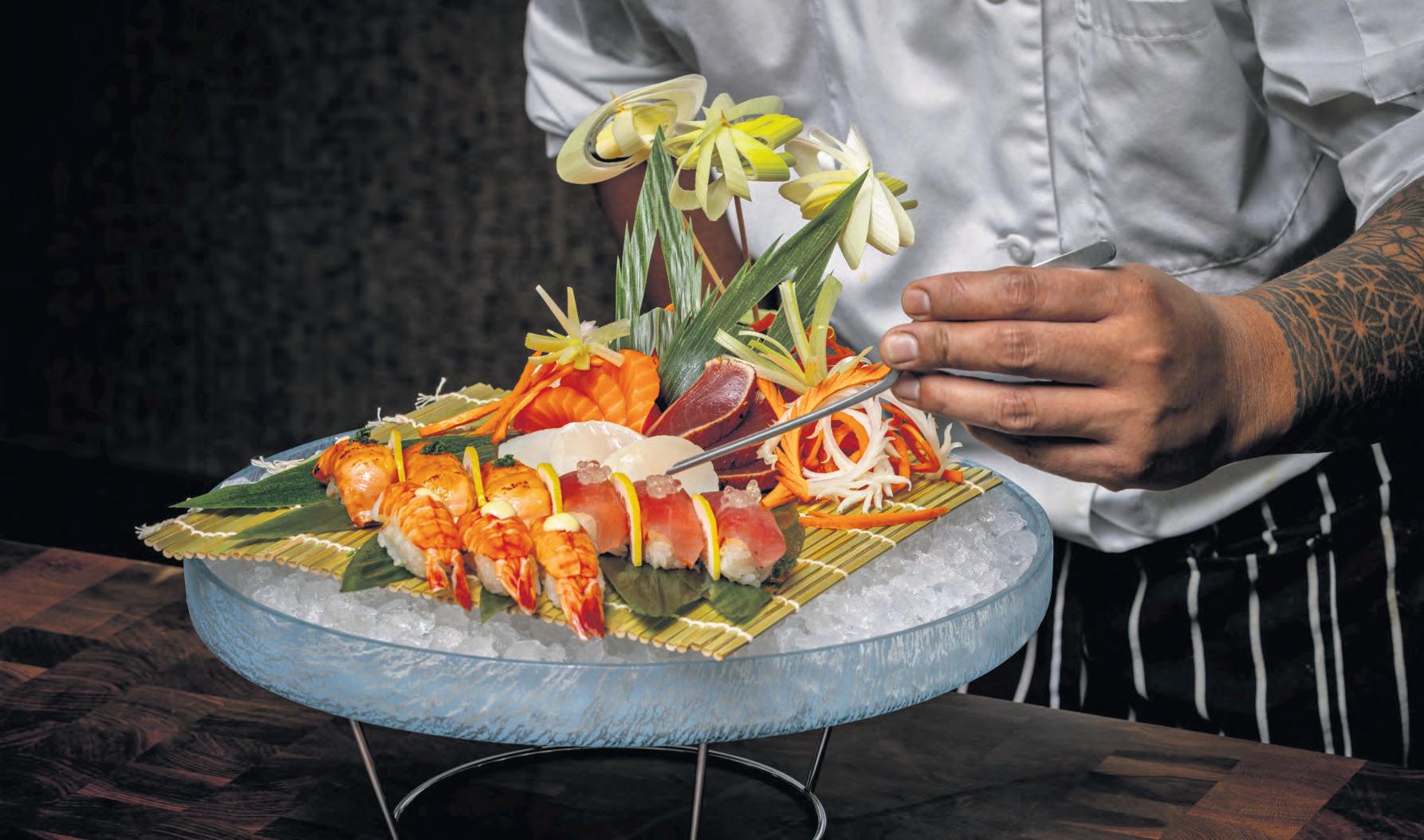






Join us for the Whistler Seniors
SATURDAY, NOVEMBER 1ST, 2025 1:00 PM - 4:00 PM
Myrtle Philip Community School
6195 Lorimer Rd., Whistler


CLAIRE MOZES, CEO
Claire

The Whistler Senior Expo is a vibrant event showcasing a variety of products and services specifically for seniors. Attend our informative breakout sessions to hear from professionals on timely topics. Connect with your community, enjoy light refreshments, and have fun as you explore and learn. Mark your calendar and bring a friend!

BY DAVID SONG
IT’S BEEN A SPLENDID back half of the 2025 campaign for Luke Meier-Smith.
The reigning OG Canadian Open Downhill (DH) champion in Whistler achieved his maiden World Cup victory as an elite on Oct. 4 in Lake Placid, N.Y. He crossed the line in three minutes and 5.946 seconds, knocking home-soil favourite Luca Shaw into runnerup position (3:06.659). Pulling up third was Henri Kiefer (3:06.816), just ahead of Jackson Goldstone (3:07.364).
For Meier-Smith, the Stevie Smith Memorial Award recipient from 2019, this milestone breakthrough is as glorious as anything he’s ever experienced.
“It means everything. I’ve worked my whole life for this, to pull it off is amazing,” he said in a press release. “I didn’t think I could win [on Saturday], but I was hopeful of a top five. To come away with the win is massive. I tried to keep the top pretty clean as I knew a mistake up there could cost you quite a lot—I tried to keep it smooth.”
Valentina Höll is likewise riding high on emotion after breaking her winless drought this year. The Austrian clinched gold (3:30.422), leaving Myriam Nicole (3:33.237) to grab silver and Sacha Earnest for bronze (3:33.271).
“It took me way too long to win again,” Höll told the media. “It has been a long year, many downs and a few ups which have been pretty amazing. I’m so happy that I could
ladies division (1,727) and Tahnee Seagrave behind her (1,604).
The early lead among men changed hands various times, with incumbent World Champion Goldstone driving hard in the course’s technical portions to make up for his relatively diminutive physique. Kiefer bested
“It means everything. I’ve worked my whole life for this, to pull it off is amazing.”
- LUKE MEIER-SMITH
finally pull it off. Wrapping up the overall is pretty insane, Mont-Sainte-Anne is going to be a real holiday. I’m happy.”
Loic Bruni remains atop the men’s World Cup overall with 1,768 points despite finishing sixth in Lake Placid. Goldstone has closed on him somewhat (1,696), and the season finale in Mont-Sainte-Anne, Que., shall decide which man earns ultimate bragging rights with Shaw a distant third (1,158).
Höll’s crown is secure (2,104), with Gracey Hemstreet occupying second overall in the
the Squamolian, though a mistimed jump coming into the finish area held Bruni back from doing the same.
Meier-Smith had not landed on a podium this year going into Lake Placid, but qualifying in second gave him confidence that switching from enduro back to downhill would be a fruitful decision. The 23-year-old roared through Whiteface Mountain’s new venue and triumphed on the strength of an immaculate first half.
No. 1 qualifier Shaw’s hopes for gold
were dashed when he lost two seconds on the top section, although he valiantly clawed back time.
“Once I got past the second split, I really tried to drill the pedals and give it all I had from there,” Meier-Smith explained. “The track suited me pretty well with the physical bottom half and pedalling. It’s cool to have a track a bit more suited to what I ride in Australia—that really helped me to come away on top.”
After seven World Cup medals this season, Höll got one in the colour she desired. Potential challenger Hemstreet fell to 10th after labouring for pace and nearly crashing outright, but Nicole drew upon her experience to raise the benchmark with a technicallysound effort. Earnest then blazed to the beam just three hundredths of a second behind her French opponent.
Höll would receive the last laugh, however, benefiting from a quick start and increasing her lead with each metre of ground covered. She needed at least fourth to lock up her overall title and rose to the occasion.
In other news, Max Alran won the men’s junior race to equal Goldstone’s record of eight Junior World Cup triumphs. “It’s great,” said the young Frenchman to reporters about his accomplishment. “I’m still leading [overall]. It’s so cool.”
Visit ucimtbworldseries.com/ results/2025/lake-placid-2025 for more results from Lake Placid. n


















Whenweexperiencepain,it’seasytoblamemuscles,joints,orage. Butinreality,everysinglemovementyoumakeisinitiated,controlled,andrefinedby yournervoussystem –soofcourseourosteopathyandmovementcoachingfocusesonit. Indoingso,wecanreducepain,restorefunction,promotelong-termhealth,helpyoufeel yourbest,andkeepyouenjoyingalltheactivitiesthatWhistlerhastooffer!




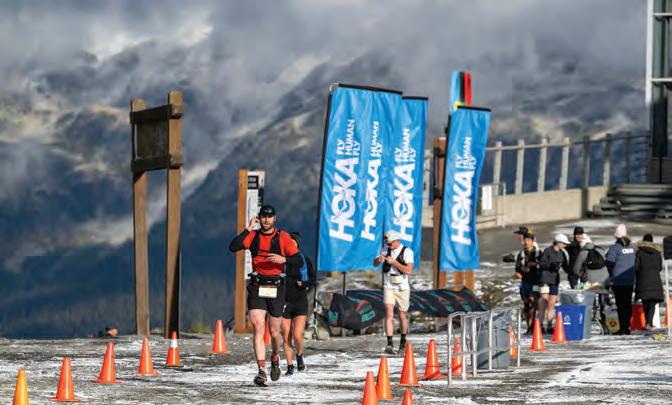
BY DAVID SONG


MORE THAN 1,000 athletes recently flocked to the Sea to Sky corridor for this year’s edition of Ultra Trail Whistler by UTMB (UltraTrail du Mont Blanc).
The competition opened on Sept. 27 with the 100-kilometre race, and Alexander King proved to be the class of his field. He struck gold by an impressive 38-minute margin (11:27:49), while Samir Gouin notched silver (12:06:42) and Cristhian Lagos did enough for bronze (12:09:57).
Sarah Allaben dominated the ladies’ 100k, emerging victorious by more than 40 minutes (13:11:45) over runner-up Anna Dulko (13:54:38) and Jenny Abegg in third (13:55:45).
(1:08:10) earned top spot among the ladies.
“We are so proud of everyone who took on the trails,” said Ultra Trail Whistler race director Alyssa Reyes in a press release. “The energy, grit, and camaraderie out there were nothing short of inspiring. Ultra Trail Whistler by UTMB treated runners to alpine views, lush forests, stream crossings, and, for our 100K athletes, a unique run through Whistler Village, before celebrating it all at a festive finish line.
“We’re thankful to our runners for bringing their determination and community spirit to the mountains. Lastly, a huge thank you to all our volunteers during race weekend. We’re grateful for their time, energy, and effort to get our runners across the finish line. We can’t wait to do it again next year!”

Kicking off an hour and a half after its lengthier counterpart was the 50k event, which saw Nicholas Handel emerge victorious for the men (4:48:52). Liam Meirow placed second and just missed out on breaking the fivehour barrier (5:00:02), while Gordon Gianniny nipped at his heels for third (5:03:08).
Meanwhile, Canadian women swept their podium in style. Frederica Blouin-Comeau and Marzelle Dominique Van Der Merwe led the pack, finishing with times of 5:44:50 and 06:03:18 respectively, leaving Kelly Young to round out the top three (6:19:38).
Sept. 28 saw the running of both the 25k and 10k events. Runners from Canada defended home soil again, with Idris Dutertre prevailing among men (2:36:37) and Mia Bennison besting her fellow ladies (3:06:01) in the 25.
The same release also notes that UTMB is “grateful to have run on the shared, unceded territory of the Lil’wat people, known in their language as L’il’wat7úl, and the Squamish people, known in their language as Sk_wx_wú7mesh.” Squamish Chief Ray Natraoro, a.k.a. Ses Siyam, designed the event logo to feature the Thunderbird: a powerful being from First Nations mythology fabled to perch upon the Black Tusk.
All race finishers (excluding 10k participants) collected running stones that can be applied to the UTMB Mont-Blanc draw.



Majell Backhausen (2:44:18) and Zander Geddes (2:45:00) joined Dutertre on his podium, while Jeanelle Hazlett (3:18:57) and Dania Belisle (3:19:53) claimed second and third in the women’s 25k.
Last but not least, a pair of Canucks triumphed in the weekend’s shortest race. Markus Stones became men’s champion (1:02:37), and his compatriot Payton Ryz
Now in its second year of operation, Ultra Trail Whistler has not gone off without a degree of strife. Many local runners and their supporters harshly criticized the event and UTMB in fall 2023 when it was unveiled. The announcement took place months after the popular Whistler Alpine Meadows (WAM) races were axed amidst contentious circumstances between its Coast Mountain Trail Running (CMTR) organizers and Vail Resorts.
Last year, Ultra Trail Whistler offered only three distances: 70 kilometres, 50 kilometres and 25 kilometres.
For more details, visit whistler.utmb. world. n








REFINED, EIGHT-SEAT TASTING MENU AT BRAIDWOOD TAVERN OFFERS A THOUGHTFUL TAKE ON JAPANESE TRADITION
BY LIZ MCDONALD
WHISTLER’S DINING SCENE isn’t short on sushi. Between longtime local staples and casual take-out favourites, newcomers have to do something special to stand out. The Four Seasons Resort and Residences Whistler seems to know that—and it’s aiming high with The Art of Sushi, a new chef-led dining experience inside Braidwood Tavern.
Hosted by Chef Jaime Magadia, the experience invites just eight guests per seating to gather at a shared table for a curated multi-course menu. It’s part performance, part dinner, where the focus is on careful technique and the pleasure of dining with friends new and old.
SASHIMI AND NIGIRI
While the sushi itself is enough to impress, the first course’s presentation adds an element of play. Resting atop a bowl of ice, the sashimi
PHOTO BY LIZ MCDONALD
and nigiri are arranged among delicate radish blossoms and spiralized carrot ribbons, turning the plate into something close to edible art.
Soy, wasabi and pickled ginger accompany king salmon, Atlantic scallop, and tuna tataki sashimi. Each piece lands cleanly, cool against the tongue, allowing texture and freshness to do most of the talking.
For the nigiri, the miso-glazed king salmon, topped with chives, is rich without being heavy. The ahi tuna, dotted with bright yuzu pearls, offers a sharp citrus lift,
Three rolls round out the dinner portion. The crispy salmon roll delivers a gentle crunch and a pop of caviar for texture. The spicy tuna roll leans on heat tempered by a spoonful of mango salsa, leaving a subtle tingle that fades rather than overwhelms. The California roll —a sushibar cliché elsewhere—is elevated here with fresh crab, orange tobiko and smooth Japanese mayonnaise.
Optional beverage pairings include several sakes by the glass, such as the elegant
It’s part performance, part dinner, where the focus is on careful technique and the pleasure of dining...
while the ebi—shrimp dotted with wasabi mayonnaise—balances sweet and briny.
Then comes a small bowl of miso soup made with wakame and silken tofu. It’s the kind of dish many sushi restaurants rush past, but here it’s given room to shine—deeply savoury, with layers of umami that build slowly and linger. It sets the bar for all other miso soups.
Dassai 45 Junmai Daiginjo or the creamier Momokawa Pearl Nigori. For wine drinkers, a slightly acidic Gewürztraminer plays the same balancing role, cutting through the richness of the fish.
Dessert keeps to the theme of simplicity. A scoop of green tea ice cream paired with a crisp sesame tuile brings mild sweetness and just enough bitterness to reset the palate.
Unlike many resort-style tasting experiences, The Art of Sushi doesn’t rely on smoke, foam or highconcept theatrics. Magadia’s time spent in Dubai honed his technique, and his warm welcome makes you feel at home. Service is attentive but never intrusive, and the eight-seat setup naturally invites conversation among guests.
The setting inside Braidwood Tavern remains comfortable rather than formal— polished wooden dining table, warm lighting and a steady hum from the adjacent guests reminding diners they’re still in a mountain resort, not a temple of gastronomy.
Starting at $95/guest, the menu feels like fair value given the precision and freshness on display. Come late November, an enhanced offering will move to the Braidwood’s full menu. Until then, the private eight-seat table is available Wednesday to Saturday, with seatings at 6 and 8 p.m. Reservations are available on OpenTable.
Whistler’s sushi landscape is competitive, but The Art of Sushi earns its place through execution and attention to detail rather than excess. For diners looking for an evening that’s calm, focused and quietly refined, it’s a welcome addition to the resort’s dining lineup. n




F FLEXIBLEREGISTRATION Flex-reg’classeshavea separatefeeand allowyoutoregisterfor classesonthedaysthatfit yourschedule.
R REGISTEREDFITNESS Registeredfitnessclasses haveaseparatefeeanda definedstartandenddate. Pre-registrationisrequired fortheentire setofclasses.
I INCLUDEDFITNESS Theseclassesareincluded withyourpriceofadmission fornoextracharge.
R Girls StrengthClub 3:45-4:45p.m. Julia I Zumba 6:30-7:30p.m. Carmen F Yoga: CoreFusion 5:15-6:15p.m. Heidi I Mountain Ready Conditioning 6:30-7:30p.m. Carly


POOLHOURS
OCT10OCT11OCT12OCT13OCT14OCT15OCT16







THE GROUP PERFORMS OCT. 26 TO LAUNCH THE WHISTLER CHAMBER MUSIC CONCERT SERIES
BY DAVID SONG
THE 2025-26 Whistler Chamber Music Concert Series begins Oct. 26 with the Rose Gellert String Quartet.
Rose Gellert is the ensemble in residence at Langley Community Music School (LCMS), performing for the institution on a regular basis and teaching students whenever they’re not touring throughout the Fraser Valley and Gulf Islands. Three of its members—Llowyn Ball, Will Chen and Ben Goheen—have been together for more than a decade, with Caroline Olsen replacing Peter Ing, who recently left for other pursuits.
All are looking forward to their maiden voyage to Whistler.
“Will is our first violinist. He often gets the top notes, the icing on the cake, a lot of really fast, flourishy type material, and he executes that brilliantly. He’s a showman and a very dedicated, passionate musician,” Ball introduces. “Ben is our cellist and the bassline. He’s our rock and our foundation,
supporting everybody else. We can always rely on him, both musically and personally.
“I play second violin. If we called it a music sandwich, I’d be the filling. Caroline is a wonderful violist: I’ve had the pleasure of working with her a number of times in chamber music and orchestral settings. She is very versatile and a very collaborative player.”
The core of Rose Gellert’s anticipated Whistler program is formed by String Quartet Op. 74, No. 3 (a.k.a. “Rider”) by Franz Joseph
Dvořák, meanwhile, was a Romantic-era maestro who incorporated folk music into this style. His offerings rarely fail to please an audience, even ones that don’t normally enjoy classical composers.
Ball wants people to know chamber music like that practiced by Rose Gellert differs significantly from other aspects of the classical genre.
“If you’re new to classical music, don’t let that stop you because we play a whole bunch of other material as well.”
- LLOWYN BALL
Haydn and String Quartet No. 12 (a.k.a. “The American Quartet”) by Antonín Dvořák. Both of these famous works are united by a theme of movement and transportation.
Known by some as the father of the string quartet, Haydn standardized the genre with an array of elegant, energetic pieces that displayed his notable sense of humour.
“When you think about classical music, the first thing you will think about is a big symphony orchestra: lots of people on stage wearing tuxedos and they’re being led by somebody holding a baton. The flip side is one person on stage doing a solo,” he explains. “Chamber is in the middle … a few different configurations, but one of the most common
is the string quartet: two violins, a viola and a cello. It’s called chamber music because it was originally composed to be played in your living room, a salon or an intimate setting.
“You have to be really good at listening to each other [as chamber musicians]. There’s a lot of give and take. You have to be open to a lot of ideas that aren’t your own, then throw yourself behind them and execute to the best of your ability. It’s a great way to build relationships with individuals, and it’s a wonderful way of making music together.”
Indeed, Ball feels the greatest lesson he’s learned in his career is how to consciously trust the musical ideas of his peers regarding seemingly minor details that can influence the tenor of a performance to a major extent.
The best way to understand what he means is to head to the Maury Young Arts Centre on Oct. 26 at 5 p.m.
“If you’re new to classical music, don’t let that stop you because we play a whole bunch of other material as well,” promises Ball. “We can play pop. We play a little bit of jazz. We play songs that you might have grown up with as a kid. It’s inherently social musicmaking, and we would love for people to join us. [Some] think it’s really formal, and then they’ll see it’s actually quite a lot of fun.”
Visit whistlerchambermusic.ca/concert/ rose-gellert-string-quartet for tickets and more details. n
BY STEPH KWETÁSEL’WET WOOD
WHEN JULIAN BRAVE NoiseCat was a child, his father left. But he remained a gravitational, charismatic, larger-than-life figure in NoiseCat’s life. For NoiseCat, his dad is Coyote—the iconic trickster, and ancestor to NoiseCat’s people, central to their stories.
From the get-go, NoiseCat connects the everyday and the supernatural, the silly and the profound. Drawing on stories from his Canim Lake Band Tsq’escen and Lil’wat Nation families, NoiseCat shares the winding tale of his relationship with his father and their interwoven journeys in his powerful first book, We Survived the Night
While his story is specific and rooted in place, it’s also expansive. It connects the stories of people across Indian Country over decades, critiquing the issues Indigenous Peoples face today, the pervasiveness of the status quo of colonialism and the constant fight for better.
NoiseCat brings you to Nuxalk territory in the Great Bear Rainforest, to Sante Fe art galleries, to dry Arizona and swampy North Carolina and Inuit territory far north. Along the way, the fish, the water, the mountains, the rocks, the ice, are all part of the stories.
The number of characters itself is striking, given how fully-formed they are, portrayed deeply with texture and shadow. At the same time, NoiseCat’s straight-forward voice, with a light wryness and joy for the absurd, makes it easy to follow along with every far-flung journey. He always brings you back to the Coyote tale, drawing connections across rivers and plateaus.
You’ll feel sucked into many vivid worlds. Some well-known faces show up, like the artist Beau Dick, or Simon Fraser, who the Fraser River is named for—a “foolish river pirate,” as NoiseCat describes in detail. There are artists, dancers, politicians, grandmas, papas, aunties, uncles—and, of course, tricksters at every turn.
As NoiseCat points out, a good story often includes some tomfoolery, badassery and trickery. Enigmatic characters and incredible voyages. The book is full of them, including prison breaks, guerilla gunslingers, thieves and mystery. But NoiseCat draws meaning from every story, weaving them together. And suddenly, the story will slow, gentle, to scenes like a young boy wailing because his dad is gone.
He looks at his own pain, intergenerational pain—shared pain—-right in the face. Because it’s part of the story. He explores connection and severance, devotion and abandonment, as well as protection, love and fighting like hell against all odds.
The whole time, he weaves in humour among pain—because, as he points out, laughter is a sign you’re still here.
An Oscar-nominated filmmaker and journalist, NoiseCat has many pieces of sharp writing—but, as he points out, this book is not journalism, and nor is it memoir. It’s a Coyote story. It’s a type of storytelling many wanted

to see erased.
NoiseCat shows how his people’s stories are full of lessons and meaning, and the very act of holding onto them is an act of survival. He constantly puts the immenseness of that history and survival in perspective. Inuit settled in Greenland, while the Vikings are gone. Empires have fallen while Indigenous governments persist. Changed, inevitably— but persisting.
“We remember these stories because we want to show we really know our kin—so well that we share their stories in all their wonder, horror and complexity,” he writes.
“We tell the truth, as best we know it, about one another. Because these stories and the truths they hold are evidence of our love.”
Beautifully written and transparently researched (the source notes are fascinating on their own), go on and settle in for story time, and find out what happens to Coyote.
Julian Brave NoiseCat is a writer and filmmaker. His first documentary, Sugarcane, directed alongside Emily Kassie, premiered at the Sundance Film Festival where it won the Directing Award in the U.S. Documentary Competition. The film was recognized with dozens of awards including Best Documentary from the National Board of Review and was nominated for an Academy Award. A proud member of the Canim Lake Band Tsq’escen and descendant of the Líl’wat Nation of Mount Currie, NoiseCat’s first book, We Survived the Night, is out Oct.14. Steph Kwetásel’wet Wood is a Skwxú7mesh writer who works at The Narwhal, an online magazine that reports on the natural world. She contributed to the Skwxú7mesh history book tiná7 cht ti temíxw: We Come From This Land
NoiseCat appears at the Whistler Writers Festival on Oct. 31 in READING EVENT
5: We Survived the Night: In Conversation with Julian Brave NoiseCat and moderated by author, Jonina Kirton. The event will be held at the Squamish Lil’wat Cultural Centre.
Tickets available at whistlerwritersfest. com. n





















ComeondowntoRoland'sPubfor turkeydinnerwithallthetrimmingsand asliceofpumpkinpiefor $2995 +tax onSundaynight,and Mondayifthere'sanyleft

ColdBeer&WineStore isopeneveryday 11am-11pm We'vegotallthesportstoo:baseball,football,hockeyandmore!!!!

GeoffreyFarmer, LasCrónicasdel Vampiro, 22denoviembrede1973 (detail),2010-2025. AudainArtMuseumCollection. OCTOBER2,2025 -FEBRUARY2,2026
Here’s a quick look at some events happening in Whistler this week and beyond. FIND MORE LOCAL EVENT LISTINGS (and submit your own for free!) at piquenewsmagazine.com/local-events

The Whistler Wine Walk is back this fall with guided walking tours of Whistler’s bustling art gallery scene. Experience Whistler’s galleries in a fun and unique way, with local, regional and international artists. Enjoy a variety of interactive art experiences while sipping on B.C. wine at each stop. Get your tickets to this yearly sell-out experience now!
> Oct. 10, 6 p.m.
> Various locations
Experience the Líl’wat Nation’s first-ever competition powwow! A vibrant weekend of drumming, dancing and celebration, featuring Thunder Hill from Oklahoma, winners at Albuquerque’s Gathering of Nations Powwow, serving as the host drum. The event is led by arena director Everett White, whipman Cecil Sheena, and MC Chris Wells, with prizes awarded in all categories. All are welcome!
> Oct. 10 to 13
> Úllus 82 IR10 Road Lílwat Nation (Mount Currie)
Celebrate the season with Braidwood’s Thanksgiving Dinner, a three-course holiday feast crafted with the freshest autumn ingredients and a touch of alpine elegance. From the first comforting bite to the final sweet indulgence, this is a meal designed to bring people together in the warm, welcoming atmosphere of Braidwood Tavern. A truly memorable way to spend



Thanksgiving in Whistler.
> Oct. 11, 5:30 to 11 p.m.
> Braidwood Tavern
A feast for your senses, the Whistler Farmers’ Market features local produce, tasty food, local artisans, live entertainment and family activities. Markets happen every Sunday until Thanksgiving on Oct. 13, with the addition of a Saturday market on Oct. 11.
> Oct. 11-12, 11 a.m. to 4 p.m.
> Upper Village Stroll
Come join the Whistler Turkey Trot, a Thanksgiving tradition that takes place in Lost Lake Park, the crown jewel of Whistler’s park system. This family-friendly event offers a 5k Drumstick Dash and a 10k Gravy Burner distance along some of the best trails Whistler has on offer. Join this event and work together to support Crohn’s and Colitis Canada.
> Oct. 12, 9 a.m.
> PassivHaus
Celebrate the spirit of freesports with an unforgettable evening of films that will inspire every snow lover. Featured films include Now by WeiTien Ho, Seeing Flowers by Strictly Create, and Out Of The Ordinary by HEAD Freeskiing and Jeff Thomas Creative. Don’t miss this incredible opportunity to kick off the winter season in style. Grab your tickets now for a night of adventure, inspiration, and all things snow!
> Oct. 15, 8 p.m.
> Garibaldi Lift Co.
iF3L AU NC HPAR TY OCT16TH
Fe atured Film: He ad Tyro li aTeamM ovie:O ut of th eO rdinar y AT MA XX FISH
iF3A LL GI RL S OCT17 TH AT SQUA MISH LIL’ WATCULTURALCENTRE iF3S NOWB OA RD SE SS IO NS OCT17 TH
Fe atured Film: Burton XRed Bull Me di aH ou se -Paved AF TE RPARTY @R AVEN RO OM AT MAURYYOUNG ARTS CENTRE iF3M ATIN E ´ ES OCT18TH
iF3M OV IE AWAR DS OCT18TH
iF3G RA NDFI NA LE OCT18TH
Fe atured Film s: Bl ankC olle ctiveFilms -C ol dC alls / Th eN or th Face -N otes in Motion AF TE RPARTY @M AX XF IS H



HOUSE FOR SALE
$8,950,000 |WHISTLER
3354 PeakDrive
5Bed,4 Bath, 3,958SF
TheCartner Team PREC* 604.935.2199
HOUSE FOR SALE
$2 ,295,000 |PEMBERTON 7456Dogwood Street
5Bed,4 Bath, 3,708SF
RonPalm PREC* 604.905.8833
HOUSE FOR SALE
$2 ,199,000 |PEMBERTON 1608Sisqa PeakDrive
5Bed,5 Bath, 2,635SF
CarleighHofman PREC*
604.805.5358











CONDO FOR SALE
$1,699,000 |SQUAMISH
3–3407MamquamRoad
3Bed,3 Bath, 2,584SF
The WentworthGroup PREC* 604.379.6731
HOUSE FOR SALE
$1,395,000 |SQUAMISH 37791Third Avenue
2Bed,1 Bath, 1,075SF
JillCarter PREC* 604.815.1737
CONDO FOR SALE
$715,000 |SQUAMISH 421–38362Buckley Avenue
2Bed,1 Bath,791SF
KatieMcLachlan RennieAdvisor 604.213.0833


Meetwithmevia videoconference, telephone,and inperson.










BY ALLYN PRINGLE
THOUGH WHISTLER MOUNTAIN opened for skiing in January 1966 with no Roundhouse and few on-mountain amenities, when Blackcomb Mountain began its operations in December 1980 the Rendezvous Lodge and the daylodge at Base II were both already up and running. Over the years, as Blackcomb gained more customers, these facilities were expanded and more were added, including the Glacier Creek Lodge in 1993.
In 1980, both the Rendezvous and the daylodge offered food services run by the Parsons family and were fully equipped with running water and washroom facilities. According to Hugh Smythe, president of Blackcomb Ski Enterprises, his experiences with washrooms at Whistler Mountain led him to believe these facilities were not going to be enough. He recalled discussions with the architects where he tried to convince them to add more washrooms to the plans, but both the design of the buildings and the budget prevented adding more facilities. As Blackcomb skier visits increased, more washrooms were added to the Rendezvous through the addition of construction washroom trailers that were bolted to the bottom floor. When the building was expanded and Christine’s Restaurant was added, the bottom floor was also expanded and more washrooms were included in the building, replacing the trailers.
Blackcomb Mountain decided to take no chances when it came to planning the washroom facilities for the Glacier Creek Lodge, though the building itself did come close to looking entirely different than it does today. Smythe remembers the team at Blackcomb, then owned by Intrawest Resort Holdings Inc., originally asked the architects for a shed roof design, similar to the Bugaboo Lodge and the daylodge at Sunshine Village. Situated at the bottom of the Jersey Cream Express and the Glacier Express, the 1,000seat restaurant was designed to look up the lift lines and capture as much sunlight as
possible and featured industrial elements such as metal beams. As they neared the construction window, however, Blackcomb asked for an architectural rendering they could put on display. According to Smythe, despite having seen all of the plans and being involved in the process, one look at the rendering was enough to realize the design was all wrong.
Blackcomb engaged new architects, a husband and wife team called Lutz & Associates, and got to work on a new design. Smythe recalled one presentation at which the architects had something under a sheet in the middle of the table. Throughout the presentation, Smythe kept getting distracted by the mysterious object until finally they pulled the sheet off to reveal a model of Glacier Creek Lodge. Like with the architectural rendering, one look was enough for Smythe to say, “That’s what we need.” Metal beams were switched for large log posts and there was even money in the budget to commission root chandeliers from Eric Skragg.
By October 1993, the 30,000-sq-ft Glacier Creek Lodge was nearing completion. It included 1,000 seats spread out over two levels, an additional 600-seat patio, and 10 food court stations. According to the Whistler Question, the building also included “one of the largest washrooms in North America, complete with 38 stalls.” The size of the washrooms was even used in the marketing for the new facility. In November 1993, the Question featured an image captured by photojournalist Bonny Makarewicz showing a line of toilets before the partitions were installed and captioned “OK! Who left the seat up? Toilets in the ladies room sit awaiting stalls in the new Glacier Creek restaurant, Tuesday. The women’s can will feature 38 toilets.” A similar image and caption was also used in a ski magazine.
Whistler Mountain renovated Pika’s restaurant that same season, doubling the size and increasing the women’s washrooms from nine to 26 stalls. By the 1990s, both mountains had come a long way from the amenities and outhouses offered to early skiers on Whistler Mountain. n












Coffeewith Council


Coffeeisn’tjust a e erage it’s awaytoconnect.
Joinusfora con ersationo er coffee an addyourvoice tolet usknowwhat’sonyourmin .
JoinyourCouncilandfellow communitymem ersfor afree cup’o’joeatthefollowinglocations andtimes:
Thursday,October16,2025
WhistlerPublicLibrary 4329MainStreet 2to4 p.m.



engage.whistler.ca






Thursday,November13,2025
BlenzCoffee 4338MainStreet 1to3 p.m.
Bringyourideas,questions,feedback,and conversation starters.We’ve gotthe coffee covered.

Needsomecoffeetalkinspiration?View ngagementprojects.
WEEK OF OCTOBER 10 BY ROB
ARIES (March 21-April 19): No relationship is like any other. The way we bond with another has a distinctive identity that embodies the idiosyncratic chemistry between us. So in my view, it’s wrong to compare any partnership to a supposedly ideal template. Fortunately, you Aries are in a phase when you can summon extra wisdom about this and other relaxing truths concerning togetherness. I recommend you devote your full creativity and ingenuity to helping your key bonds ripen and deepen.
TAURUS (April 20-May 20): Poet Rainer Maria Rilke advised, “Be patient toward all that is unsolved in your heart and try to love the questions themselves.”
These days, dear Taurus, that’s your power move: to stay in conversation with mystery without forcing premature answers. Not everything needs to be fixed or finalized. Your gift is to be a custodian of unfolding processes: to cherish and nourish what’s ripening. Trust that your questions are already generating the early blooms of a thorough healing.
GEMINI (May 21-June 20): I am a great admirer of Bart Simpson, a fictional fourth-grade student on the animated TV show The Simpsons. He is a constant source of unruly affirmations that we could all benefit from incorporating into our own behaviour when life gets comically weird. Since I think you’re in such a phase now, Gemini, I am offering a batch of Bart-style gems. For best results, use them to free yourself from the drone of the daily routine and scramble your habitual ways of understanding the world.
BREZSNY
and studied how people actually used spaces. His best architecture soulfully coordinated the relationships between indoor and outdoor areas, private and public zones, and individual needs and community functions. The “quality without a name” was the term he used to identify the profound aliveness, wholeness, and harmony of spaces where people love to be. In the coming weeks, Libra, I hope you access your own natural gift for curating relationships and cultivating balance. Your solutions should serve multiple needs. Elegant approaches will arise as you focus on connections rather than isolated parts.
SCORPIO (Oct. 23-Nov. 21): Some medieval mystics claimed that angels spoke in paradoxes because the truth was too rich for simple logic. These days, I believe you Scorpios are extra fluent in paradox. You are raw yet powerful, aching and grateful, confounded but utterly clear. You are both dying and being reborn. My advice: Don’t try to resolve the contradictions. Immerse yourself in them, bask in them, and allow them to teach you all they have to teach. This may entail you sitting with your sadness as you laugh and letting your desire and doubt interweave. The contradictions you face with open-heartedness will gift you with sublime potency and authority.


Now here’s Bart: 1. “I will not invent a new religion based on bubble gum.” 2. “I will not sell bottled ‘invisible water.’” 3. “I will not try to hypnotize my friends, and I will not tell co-workers they are holograms.” 4. “I will not claim to be a licensed pyrotechnician.” 5. “I will not use the Pythagorean theorem to summon demons.” 6. “I will not declare war on Thursdays.”
CANCER (June 21-July 22): During its entire life, the desert plant Welwitschia mirabilis grows just two leaves. They never wither or fall off but continually grow, twist, split, and tatter for hundreds of years. They keep thriving even as their ends are worn or shredded by wind and sand. I love how wild and vigorous they look, and I love how their wildness is the result of their unfailing persistence and resilience. Let’s make Welwitschia mirabilis your inspirational symbol in the coming weeks, Cancerian. May it motivate you to nurture the quiet, enduring power in your depths that enables you to express yourself with maximum uniqueness and authenticity.
LEO (July 23-Aug. 22): Have you been to Morocco? I love that so many houses there are built around spacious courtyards with intricate tilework and lush gardens. Sooner or later, of course, the gorgeous mosaic-like floors need renovations. The artisans who do the work honour the previous artistry. “In rebuilding,” one told me, “our goal is to create new magnificence that remembers the old splendour.” I hope you pursue an approach like that in the coming weeks, Leo. The mending and healing you undertake should nourish the soulfulness you have cultivated, even as you polish and refine.
VIRGO (Aug. 23-Sept. 22): Virgo novelist Agatha Christie often planned her elaborate plots while cleaning her house or washing dishes. She said such repetitive, physical tasks unlocked her creativity, allowing ideas to emerge without force. I suggest you draw inspiration from her method in the coming weeks. Seek your own form of productive distraction. Instead of wrestling with a problem in a heroic death match, lose yourself in simple, grounding actions that free your mind to wander. I am pretty sure that your most brilliant and lasting solutions will emerge when you’re not trying hard to come up with brilliant and lasting solutions.
LIBRA (Sept. 23-Oct. 22): Libra architect Christopher Alexander developed a sixth sense about why some spaces feel comfortable while others are alienating. What was the source of his genius? He avoided abstract principles
SAGITTARIUS (Nov. 22-Dec. 21): The ancient city of Petra, built in sandstone cliffs in what’s now Jordan, was mostly hidden from the outside world for centuries. In 1812, Sagittarian Swiss explorer Johann Ludwig Burckhardt rediscovered it by disguising himself as a pilgrim. He trained extensively in the Arabic language, Islamic culture, and local customs so he could travel incognito. You Sagittarians can benefit from a similar strategy in the coming weeks. Life will conspire to bring you wonders if you thoroughly educate yourself about the people and situations you would like to influence. I invite you to hike your empathy up to a higher octave, cultivate respect for what’s unfamiliar, and make yourself extra available for exotic and inspiring treasures.
CAPRICORN (Dec. 22-Jan. 19): During the 1800s, countless inventors chased the impossible dream of perpetual-motion machines: contraptions that would run endlessly without any fuel source. Every attempt failed; such devices bucked the fundamental laws of physics. But here’s good news, Capricorn: You are close to cracking the code on a metaphorical version of perpetual motion. You are cultivating habits and rhythms that could keep you steady and vital for a long time to come. I predict the energy you’re generating will be self-sustaining.
AQUARIUS (Jan. 20-Feb. 18): Octopuses have three hearts and blue blood. They taste with their skin, solve puzzles, and squeeze their entire bodies through coinsized holes. No wonder they are referred to as the aliens of Earth, just as you Aquarians are the aliens of the zodiac. According to my analysis, now is a perfect time for you to embrace your inner octopus. I authorize you to let your strangeness lead the way. You have the right and duty to fully activate your multidimensional mind. Yes, you may be misunderstood by some. But your suppleness, radical empathy, and nonlinear genius will be exactly what’s needed. Be the one who sees escape routes and paths to freedom that no one else perceives. Make the impossible look natural.
PISCES (Feb. 19-March 20): Dear Pisces, it’s like you’re in one of those dreams when you’re exploring the attic or basement of your home and discover secret rooms you didn’t realize existed. This is good! It means you are finding uncharted frontiers in what you assumed was familiar territory. It suggests you are ready to see truths you weren’t ready for before. Congrats! Keep wandering and wondering, and you will discover what you didn’t even know you needed to know.
Homework: May be time to trade in an old symbol of security for a new one. Newsletter.FreeWillAstrology.com.
In addition to this column, Rob Brezsny creates EXPANDED
In-depth weekly forecasts designed to inspire and uplift you. To buy access, phone 1-888-499-4425. Once you’ve chosen the Block of Time you like, call 1-888-682-8777 to hear Rob’s forecasts. www.freewillastrology.com

CALL OR PLACE YOUR CLASSIFIED WITH OUR ONLINE SERVICE FOR EITHER PRINT OR ONLINE...OR BOTH! Get
Î Secure & scamless
Î Fully searchable
Î Targeted online community
Î Categorised listings
Î No reposting
Î Trusted by locals
Î Make your listing stand out with featured locations




EmployeeHealth&WellnessPlanavailable
HEAVYEQUIPMENTOPERATOR– Minimum 5yearsor5,000hoursoperatingexperience onexcavator. Full-time,Monday –Friday.$33-$46perhour.
CRUSHING &EARTHWORKSMANAGER– Musthaveexperiencewithmobilecrushingplantandheavy civilconstruction.$33-$46perhour.
CONSTRUCTIONLABOURER– Greatopportunitytolear non-the-job.Staminaforphysically demandingworkandperseverancetobraveinclementweather required. Previousexperiencepreferredbutnot required. Trainingprovided.$28-$33perhour.
PIPELAYER –Minimum 5yearsexperienceincivilconstruction. Full-time,Monday –Friday.$33-$43perhour.
TRUCKDRIVER –BCDLClass 1orClass 3withairbrakesrequired.Manualtransmission. 2yearsexperiencepreferred.$35-$41.50perhour.
PROJECTMANAGER– Minimum10yearsexperiencepreferred.CivilEngineeringdegreeor CivilTechnologydiplomapreferred.FullTime,$90,000to$125,000peryeardependingon experienceandqualification.
PROJECTCOORDINATOR– Minimum2 yearsexperiencepreferred.$29-$40perhour.

Î
Free ad design, colour options, incentives for ad frequency. Contact a sales rep today. Advertising

Î Bolding ...........................................50¢/word
Black'sHotWheelsishiringfora: RedSealAutomotive ServiceTechnician
Location:DowntownPemberton
Schedule:Mon-Fri,8:00am-5:30pm(42.5hrs/week)
Pay:$45-$50/hr(basedon experience)
Responsibilities:
Diagnose,repair, andmaintaincustomervehicles
Conductframeinspectionsforcracksordamage
Install, balance, andrepairtires(passenger,light truck, commercial, agricultural)
Performmotor vehiclesafetyinspections(body, frame, powertrain,etc.)
Mentorapprentice technicians
Requirements:
RedSealAutomotiveService TechnicianCertification
Experiencewithmechanical ,electrical, andelectronicvehicle systems
ValidDriver’sLicense Basiccomputerskills

Send resumesto: blackshotwheels@shawbiz.ca
Note:Additionaljob-relateddutiesmaybeassigned.Requirementsreflect minimumknowledge,skills,orabilities.


Ourteamofpeopleiswhatsetsusapartfromotherbuilders.Aswe continuetogrowasthe leader inluxury projectsinWhistler,ourteamneedsto expandwithus. We are currentlyhiring:
Labourers ($20-$30hourly)
CarpentersHelpers/Apprentices1st to4th year ($25-$35hourly)
ExperiencedCarpenters ($30-$45hourly)
Carpentry Foremen ($40-$50hourly)
SiteSupervisor
Rates vary based onexperienceand qualifications.Red Sealis a bonus but not required Crane Operator experienceconsidered anasset.
EVR is committed tothe long-term retention and skillsdevelopment ofourteam We are passionateaboutinvestinginourteam’s future
WEOFFER:
• Top Wagesanda Positive WorkEnvironment
•FlexibleSchedule- WorkLife Balance (Wegetit,welove toskiandbike too.)
• Training& TuitionReimbursement(Needhelpgetting yourRedSeal?)
•Assistance withworkvisaand PermanentResidency (We canhelp!)
BENEFITS &PERKS:
• Annual Leisure& ToolBenefit – Use toward ski/bike pass,toolpurchase,etc. – you choose!
•ExtendedHealthandDentalBenefitsfor youand yourfamily
We promotefromwithinandarelookingtostrengthenouramazingteam.Opportunities for advancement intomanagementpositionsalways exist for the right candidates.Don’t missout onbeingabletobuildwiththeteamthatbuildsthemostsignificantprojectsinWhistler Send your resumeto careers@evrfinehomes.com. We lookforwardtohearingfrom you!

GroupFitnessClasses
Friday
I7:30-8:30a.m.StrengthinPlay–Anna
Saturday
I10:30-11:30a.m.Zumba–Susie
Monday
F6-7p.m.SPIN–Courtney
Tuesday
I5:30-6:30a.m.TRXMixer–M-A
Wednesday
F6:00-7:00p.m.SPIN–Courtney
Thursday
F5:15-6:15p.m. Yoga:CoreFusion–Heidi







Areyoupassionateaboutqualityconstructionandreadytogrowyour careerin adynamic, award-winningcompany?TMBuilders, aleader inhigh-endresidentialandcommercialconstructioninWhistler,is lookingfor:
Labourers,Apprentices,andCarpenterstojoinourteam.
Labourer $20-28:Assistskilledtradespeopleon-site,maintainsafeandefficientjobsites, andgainhands-onconstructionexperience.
•Friendlyandapproachablepersonalitywith adesiretolearnasmuchasyoucanabout construction
Apprentice $25-$35:Startyourjourneytobecoming aRedSealCarpenter,working alongsideexperiencedmentorsanddevelopingyourcraft.
•Registeredwith arecognizedprovincialtrainingauthority
•Demonstratedknowledgeofconstructionpracticesandoperationoftools
•Abilitytoworksafelyandeffectivelywithminimalsupervision
•Musthavebasiccarpentrytools,toolbelt,properfootwear
Carpenter $35-$50:Bringyourskillstohigh-endprojects,focusingonprecision,quality, andcraftsmanship.
•3+yearsofexperienceworkingas acarpenter
•Knowledgeofresidentialrenovationandnewbuildconstruction
•UnderstandingofBC&LocalMunicipalBuildingCodes
•Musthavetoolbeltandtools
•RedSeal/Journeymancertificationpreferred
•OccupationalFirstAidanasset
RequirementsforAll Positions:
•Strongworkethicandteam-orientedmindset
•Physicalabilitytoperformconstructiontasksincludingliftingheavyobjects,working at heights,andinallweatherconditions
•MustbelegallyentitledtoworkinCanada
•Musthave ownvehicleandacleandriver’sabstract
• Commitmenttosafetyon-site
WhyTMBuilders?Weare awardwinningNetZeroCertifiedconstructionleaders.
• Workonexceptional,customhomesandmountaininfrastructureprojects
•Learnfromindustry-leadingtradespeopleandexpandyourskills
•Supportive,safety-focusedworkenvironment
•Opportunitiesforcareergrowthandprofessionaldevelopment
Applyto:connect@tmbuilders.ca





Wage:$25.00 -35.00perhour, plusgratuities
Hours: Fulltime or part time, winterseasonal,weekends, day andnight
Class4 unrestrictedlicense required, Class1 or 2anasset,trainingavailable Housingavailable
Formoreinformation: https: //whistlerconnection.ca/jobs/driver TheSeatoSkycorridor’stopcivil constructioncompan y.
Applicantsshouldbeprofessionalandsafety-minded, with a commitmenttocontributing positiv elytoou r teamenvironment.
We areseekingaqualifiedindividualforthefollowing position:
HeavyDutyRedSeal TechnicianorApprentice Heavy Duty TechnicianorShopHelper
*Competitivewages,extendedhealthbenefits(after3 months)
PleaseEmailresumeto: info@whistlerexcavations.com

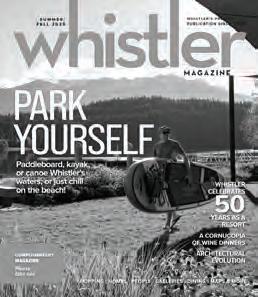






ApplicantsmustpossessaNursingdiplomaor degree,currentpracticingregistrationwithBCNU, a class5driver’slicenseanda clearcriminal recordcheck,includingvulnerablesector.
Formoredetailsonthejob,orto applyvisit www.lilwat.ca/careers
Foranyquestionsemail: hr@lilwat.ca



ÚlÍusCommunityCentre
•Custodian/EventsHost($17.85-$20.90perhour)
•HumanResourcesGeneralist($57,330.00to$64,610.00peryear)
Child&FamilyServices
•AssistantDirector,Child&FamilyServices($93,475.00to $101,556.00peryear)
Lil’watHealth&Healing+PqusnalhcwHealthCentre
•HealingProgramManager($57,330.00to$64,610.00peryear)
•ProgramCoordinator($46,683.00to$63,973.00peryear)
•AssistantDirector,Health& Wellness($93,475.20to $101,566.00peryear)
•CommunityHealthNurse($41.42to52.81perhour) +$2.15hourlypremium)
•Registered/LicensedPracticalNurse-HomeCare($32.84to $45.03perhour+$2.15hourlypremium)
CommunityProgram
•EarlyChildhoodEducator-Infant Toddler($24.00-$29.45/hr basedonexperience+thispositioniseligibleforwagetopup)
Xet’òlacwCommunitySchool
•EducationAssistant($20.90to$29.45perhour)
•LanguageResource WorkerorLanguage Teacher($46,683to $109,520peryear)
•PE Teacher($60,015.00to$109,520.00peryear)
Ts’zilLearningCentre
•IndigenousSupport Worker($38,038.00to$53,599.00peryear)
•IndigenousSupport Worker–Academic($38,038.00to $53,599.00peryear)
•EmploymentPlacementSpecialist–

HealthProgram
ClinicalServicesManager
Providesleadership of acomprehensive range ofnursing programswithin community andpublic health
CommunityHealthNurse
Providecaretoadultmembers(19+),being responsibleoffullscopenursing care to avariety ofclients, constantlypromotinghealthand wellnesseducation,andaligning careoutof community
Home &Community Care Nurse
Providecaretoadult communitymembers(19+), being responsibleforfullscopenursing care to homecareclientsandmemberswithchronic diseases,constantlypromotinghealthand wellness education,andaligning careoutof community
Child &FamilyServices
FamilyPreservationWorker
SupportsSSHSfamiliesthroughculturally sensitiveprogramsandservices,promoting children’ssafetyand qualityoflife. This role coordinatesresourcestoenhancefamilyunity, empowering familiesasprimarycaregivers
Jordans Principle
JordansPrincipleAdministrativeAssistant
Providesadministrativesupport to theJordan’s PrincipleServiceCoordinator, Service Coordination delivery,andsupportcommunity building activities asneeded.Disseminate informationtothepublicand to serviceproviders and community-basedprofessionalstopromote Jordan’sPrinciple and reduceservicebarriers for IndigenouschildreninBC.
Early ChildhoodDevelopment
ECDProgram Coordinator
TheECD Coordinatoroverseesquality programming in N’Quatqua,Skatin,and Samahquam, includingEarlyChildhood DevelopmentDrop-ins, Playgroups,andlicensed childcare. They supportchildrenaged0-6and theirfamiliesusingastrengths-basedapproach, managing programplanning,staffing,resources, recordkeeping,andreporting.
Administration
Bookkeeper
TheBookkeeperwillplayacrucial role in managing thefinancial recordsandtransactions forSSHS,ensuring precision,compliance, and overallfinancial stability. This detail-oriented individualwill be motivated to assist our accounting team in maintaining accuratefinancial recordsandhandling daily bookkeeping tasks.



SSHSis anon-profitIndigenous HealthOrganizationdedicated to improvingthehealthand wellbeingofIndigenous communities.Ourorganization providesculturallyappropriate healthcare services,programs andinitiatives to supportthe holistichealthofIndigenous individualsand families.
SSHSoffersa competitive benefitsandemployment packageforfull-time staff Allpositions requireon-site availability
SSHS teammemberstravel fromourofficeinMountCurrie, BCinto thecommunities,often drivingalong aForestService Road foruptotwo hoursor beinghelicopteredin. This ensuresthatSSHSmembersfromnewborns to Eldershave access to thehealthand wellnesssupports at theirhealth stations,orhealthspace,intheir home communities.
Applybysendingyourresume andcoverletterviaemail: Julia.schneider@sshs.ca
View thefulljobpostingson ourwebsite: sshs.ca/careers/




















PEOPLE WHO do not live under rocks are well aware relations between Canada and the United States have seen better days. As a Canadian, I support the economic and political measures taken by our government to safeguard our sovereignty and hope cooler

BY DAVID SONG
dsong@piquenewsmagazine.com
heads will ultimately prevail on both sides of the border. (Cynics may argue this is too much
However, as a dual citizen born in Brooklyn, New York I would also exhort us to prevent Donald Trump’s maverick regime from unduly tainting our view of the American people in general—at least, those who aren’t clamouring for us to become State No. 51.
The current situation feels like a bizarre Truman Show reality. Aren’t the Stars and Stripes meant to be in our corner? When was the last time we had reason to hesitate about trips to the U.S.? Let’s be real: should World War III ever break out, the pragmatic thing for Canada to do—up until recently—was fight as our resources allow and depend on America’s mammoth military to fill the numerous gaps we can’t.
Now we’ve realized the U.S. might not be quite as welcoming to us as before. A
Globe and Mail report from Aug. 14 says nearly 150 Canadians have been detained by Immigration and Customs Enforcement (ICE). While nearly 70 per cent of these people have a criminal record or pending charges of some kind, the two toddlers among them definitely don’t.
Neither does Jasmine Mooney, a 35-yearold Vancouver business consultant taken into custody during a seemingly routine visa appointment on March 3 at the San Ysidro border crossing near San Diego, Calif. She endured 12 days of inhumane treatment at two different detention facilities with limited medical and legal recourse, at one point sharing a unit with roughly 140 other women. Like her, none of them had a criminal record.
Mooney’s story has been told by CBC, the National Post and The Guardian. It ought not to fade from public consciousness, and neither should the testimony of Paula Callejas: a 45-year-old Montreal native who has been detained since March 28.
what we shouldn’t do is allow that concern to spiral into unchecked fear.
Our neighbours to the south are feeling uneasy as well—albeit for differing reasons.
Statistics Canada tracked a 10.7-per-cent decline in road trips taken by Americans to Canadian provinces in April and 8.4 per cent in May compared to the same months last year. Declines in air travel were also noted: 5.5 per cent in April and 0.3 per cent the following month. Thirty two per cent of businesses surveyed by the Tourism Industry Association of Ontario in May reported a dip in summer bookings by Americans.
Cleveland, Ohio’s Dan Davis told CBC he reconsidered a motorcycle journey to Ontario because “all it takes is one person to say: ‘you know what, I’m going to show these guys a lesson,’ whether it’s vandalizing a bike or … throwing a beer can at you.”
Some tourism organizations have rolled
out
advertising initiatives to woo U.S. visitors given they spent $15.3 billion in-country last year.
Trump’s mid-August takeover of the Washington D.C. Metropolitan Police Department and coinciding deployment of National Guard soldiers in spite of a relative drop in violent crime may be seen as further evidence of democratic erosion in the U.S. It’s disturbing, ominous, and perhaps downright scary.
We should be concerned about it, but
Some tourism organizations have rolled out advertising initiatives to woo U.S. visitors given they spent $15.3 billion in-country last year. According to senior manager of communications and membership Lauren Everest, Tourism Whistler has followed suit by expanding its marketing efforts to include Texas and New York on top of Washington and California.
Tourism Whistler measures American visitation by way of room nights and is bucking the national trend. While overnight U.S. visitors to both Canada and British Columbia were down six per cent this summer, American room nights in Whistler grew by five per cent compared to summer 2024.
Any boost to our economy is a positive sign in this time of abundant tariffs. Money aside, Whistlerites and other Canadians have an opportunity to demonstrate our fair-minded nature by welcoming all who visit our homes in good faith.
Hospitality might not change the questionable behaviour of Trump’s administration, but it just might keep us grounded. It enables us to keep some semblance of normalcy in the ways we can, even as we take action in the ways we must. It reminds us that human beings are diverse, flawed and ultimately valuable—no matter their place of origin.
Resenting or vilifying an entire country’s populace is both unfair and unproductive. All that will do is breed anxiety at a time when our individual and collective decisions need to be guided by logic, poise and fortitude. Whistler is used to embracing tourists with open arms, and it needs to keep doing just that.
I am worried about what’s happening in the United States, the nation my parents decided to begin a new life in after China’s brutal crackdown on the 1989 Tiananmen Square protests. However, I also echo Mooney’s words near the end of her chilling March interview with The Guardian: we need to have faith that “no matter how flawed the system, how cruel the circumstances, humanity will always shine through.” n


8409 BigSky Terrace, Whistler
3Bed |2.5Bath |3,152sq.ft.


$4,395,000 604-902-3335
SteveLeggePREC*steve.legge@evrealestate.com
OPENHOUSESATURDAY1-3

22-4857PaintedCliffRd, Whistler
2Bed |2 Bath |1,013sq.ft.




$1,755,000 604-938-3815
RonMitchellPREC* &RachelAllen ron@resortwhistler.com R&RGroup
8232Alpine Way, Whistler
3Bed |2 Bath |978 sq.ft.
$1,999,999
3359OspreyPlace,Blueberry






604-902-3309
PeterLalor broker@evwhistler.ca

7505 PebbleCreekDrive, Pemberton Vacantland |31,864sq.ft.(.731acres)


$875,000 7 78-998-2357
GinaDaggettgina.daggett@evrealestate.com

$6,850,000
Nestledbetweenrusticcharm andmodernelegancethismountainhomeis aharmoniousblendof timelessbeauty.Overlookingthe WhistlerValley trail,ontotherollinggreensandfairwaysofthe world-famousWhistlerGolfCourseanduptotheAlpinepeaksof WhistlerandBlackcombMountains.
MaggiThornhillPREC*+1-604-905-8199
maggi.thornhill@evrealestate.com
Maggi& MaxThornhill Team


8505MatterhornDrive,Whistler
5Bed |3 Bath|2,576sq.ft.


$3,270,000 604-935-0700
JanetBrown janet.brown@evrealestate.com

2341GondolaWay,Whistler
4Bed |6 Bath |3,600 sq.ft.
$5,495,000


604-966-764
KenAchenbachken.achenbach@evrealestate.com

210/212-4050 Whistler Way, Hilton WhistlerResor
TheHilton WhistlerResortiscentrallylocatedintheheartofthe Villagenexttothe Whistlerand BlackcombMountaingondolasandisanexcellentfullservicehotelwhere everythingyoucould possiblyneedtoenjoyamemorablestay canbelocatedjuststepsaway.
MaggiThornhillPREC*+1-604-905-8199
maggi.thornhill@evrealestate.com
Maggi& MaxThornhill Team











